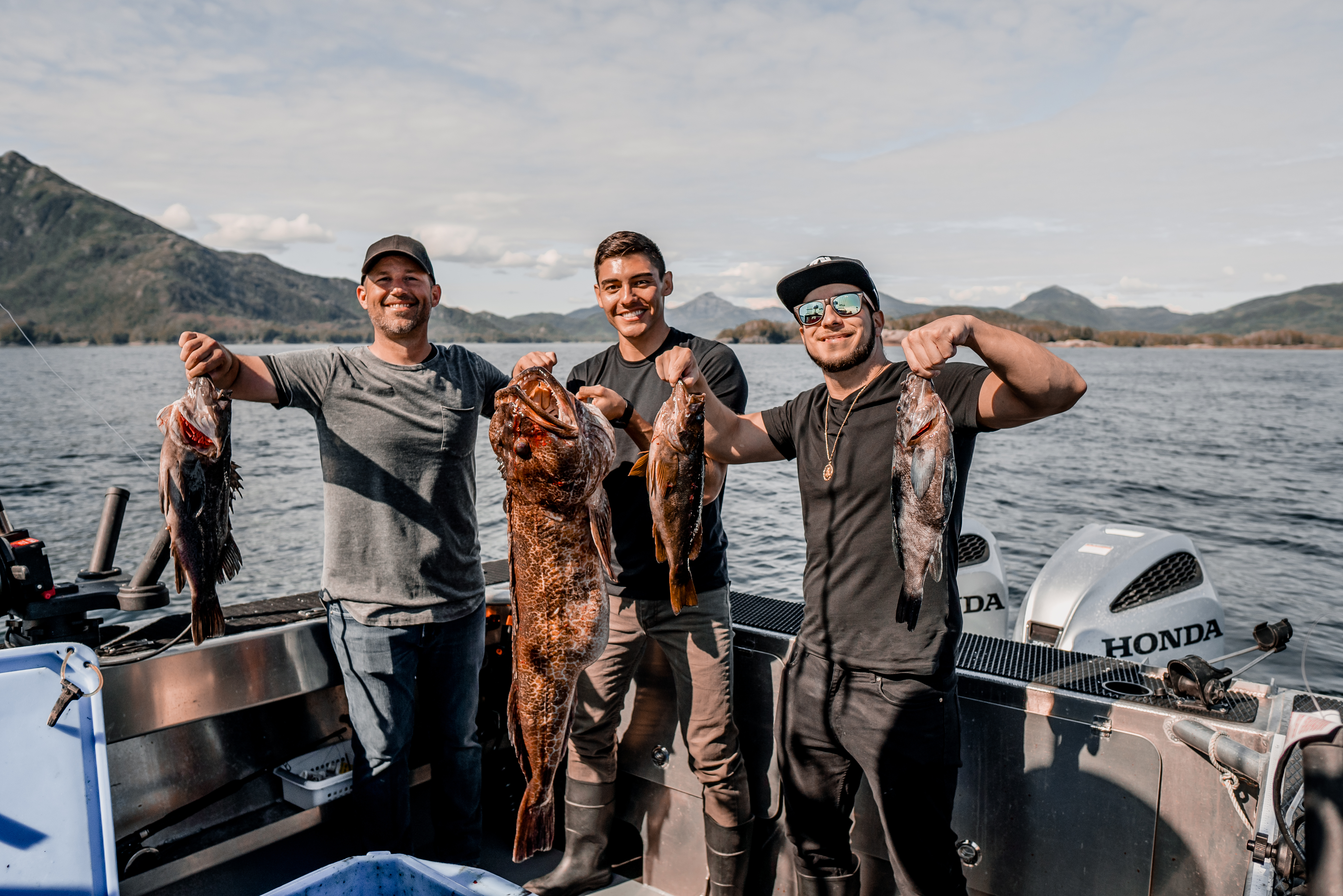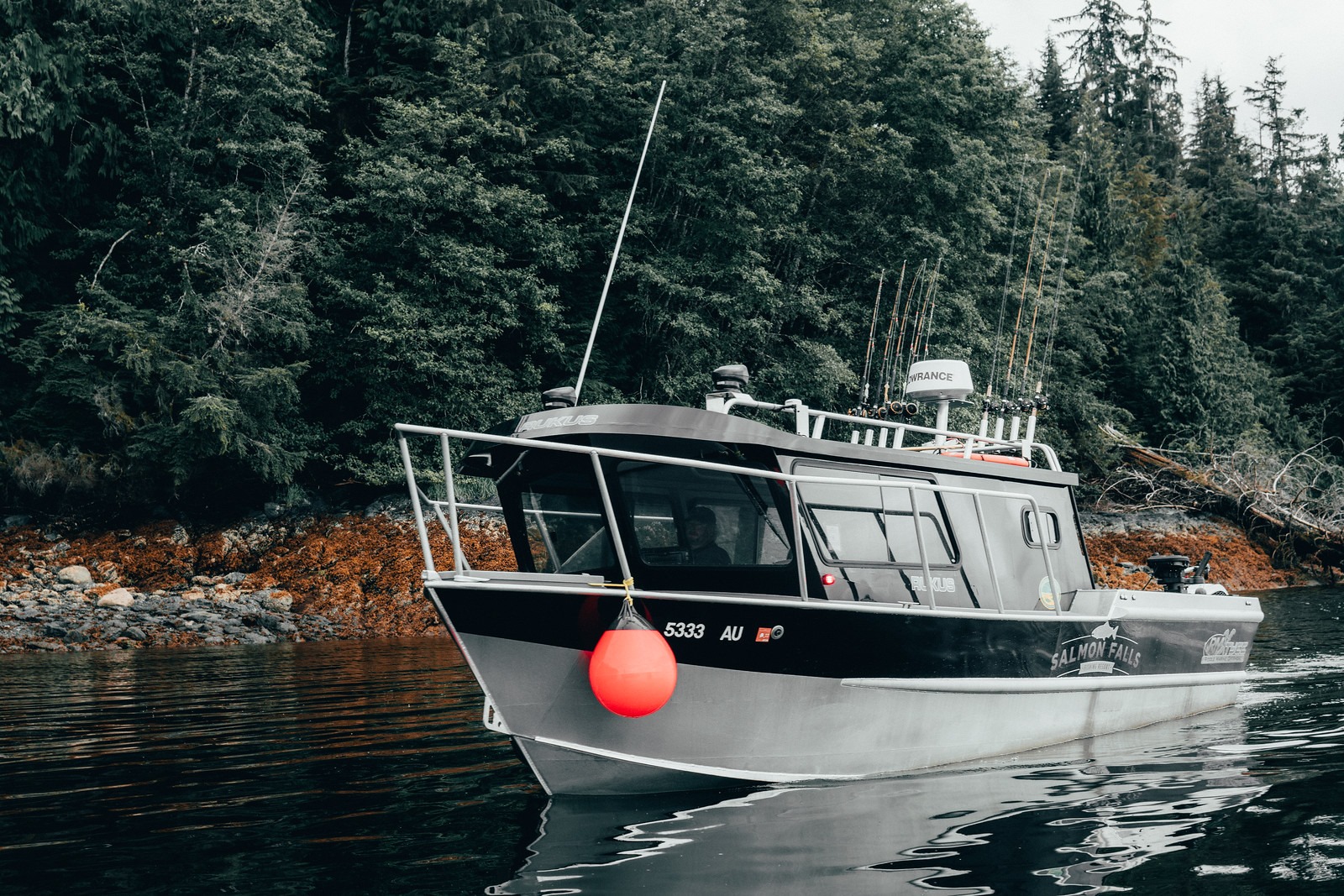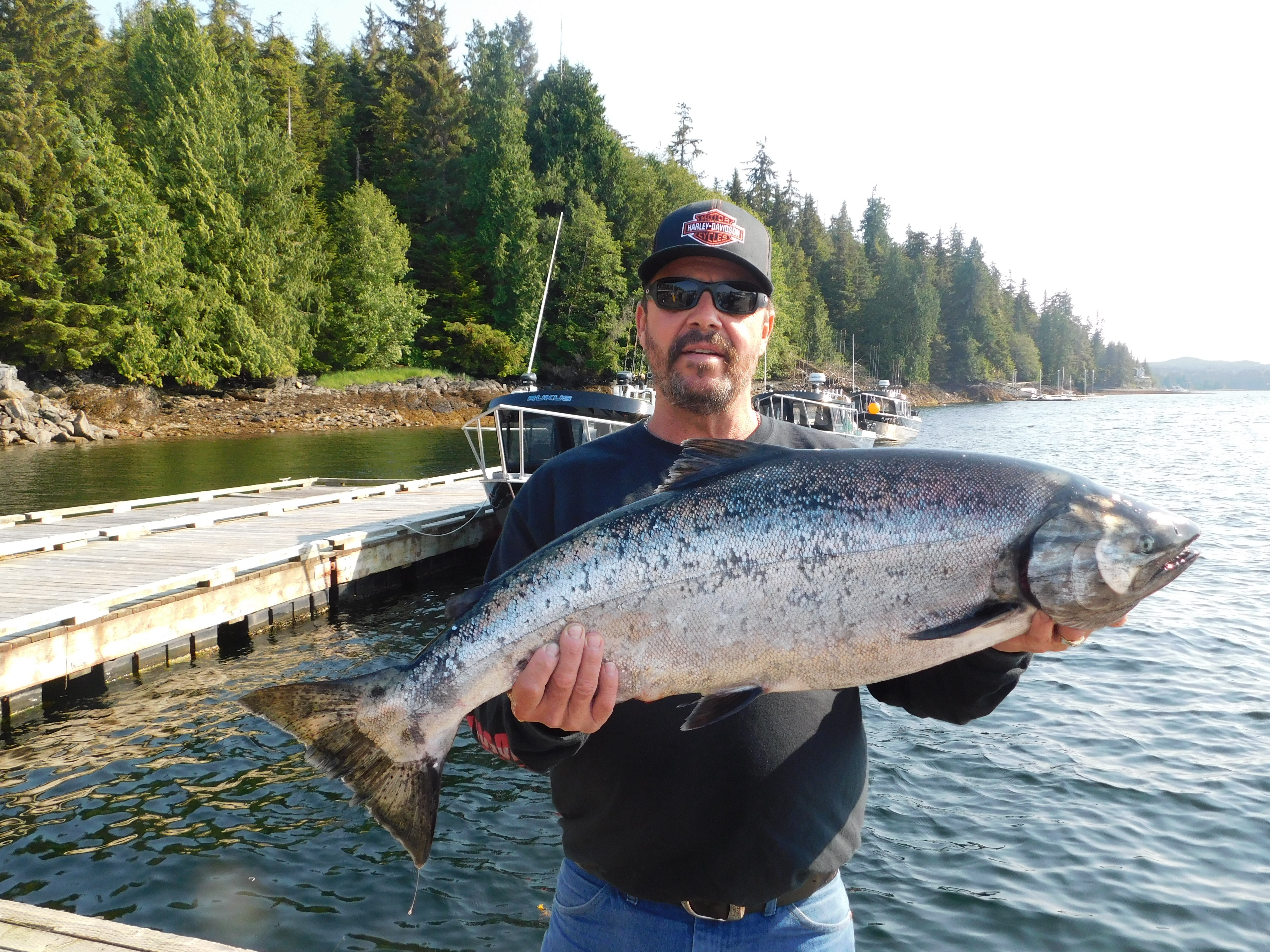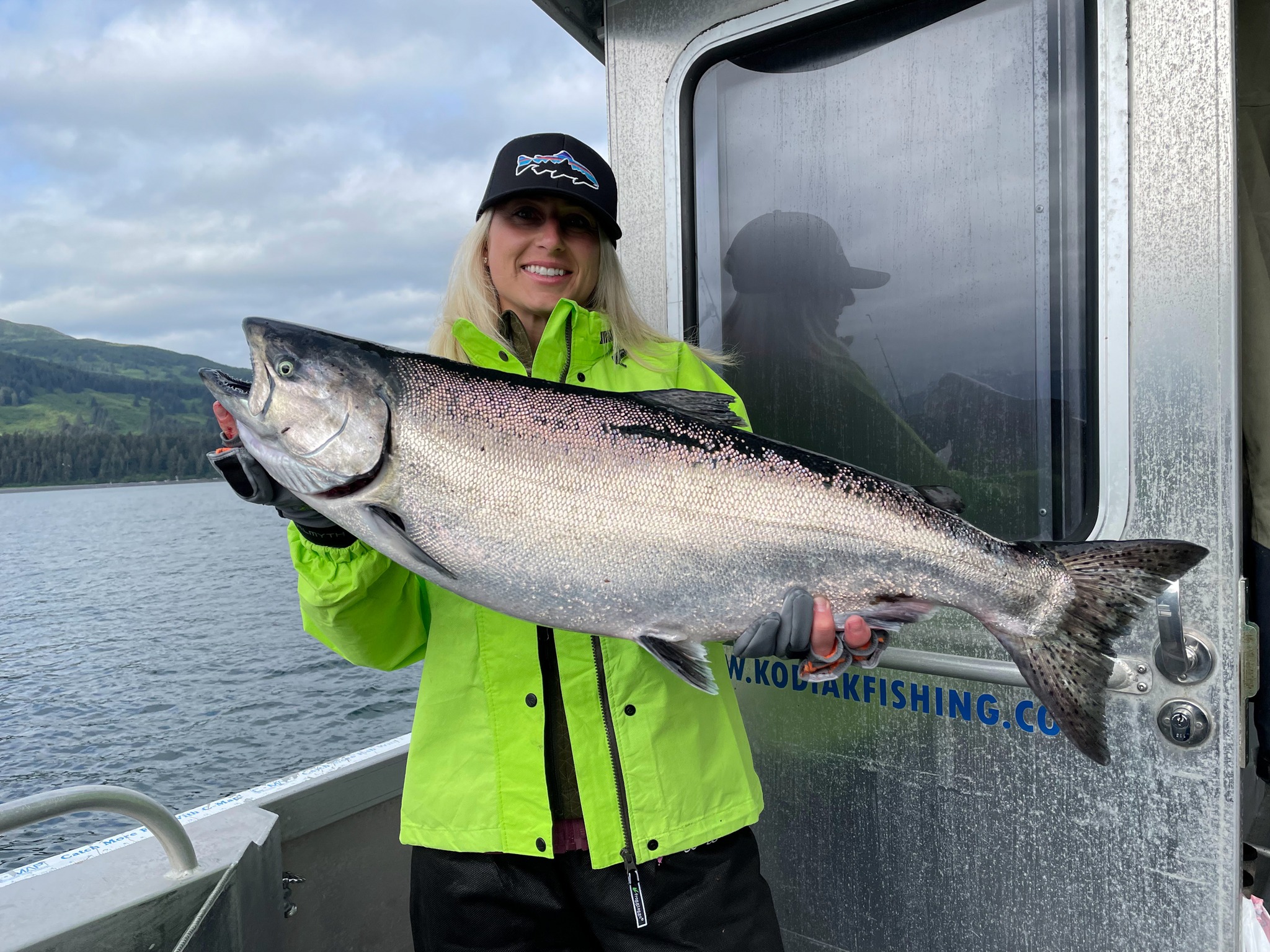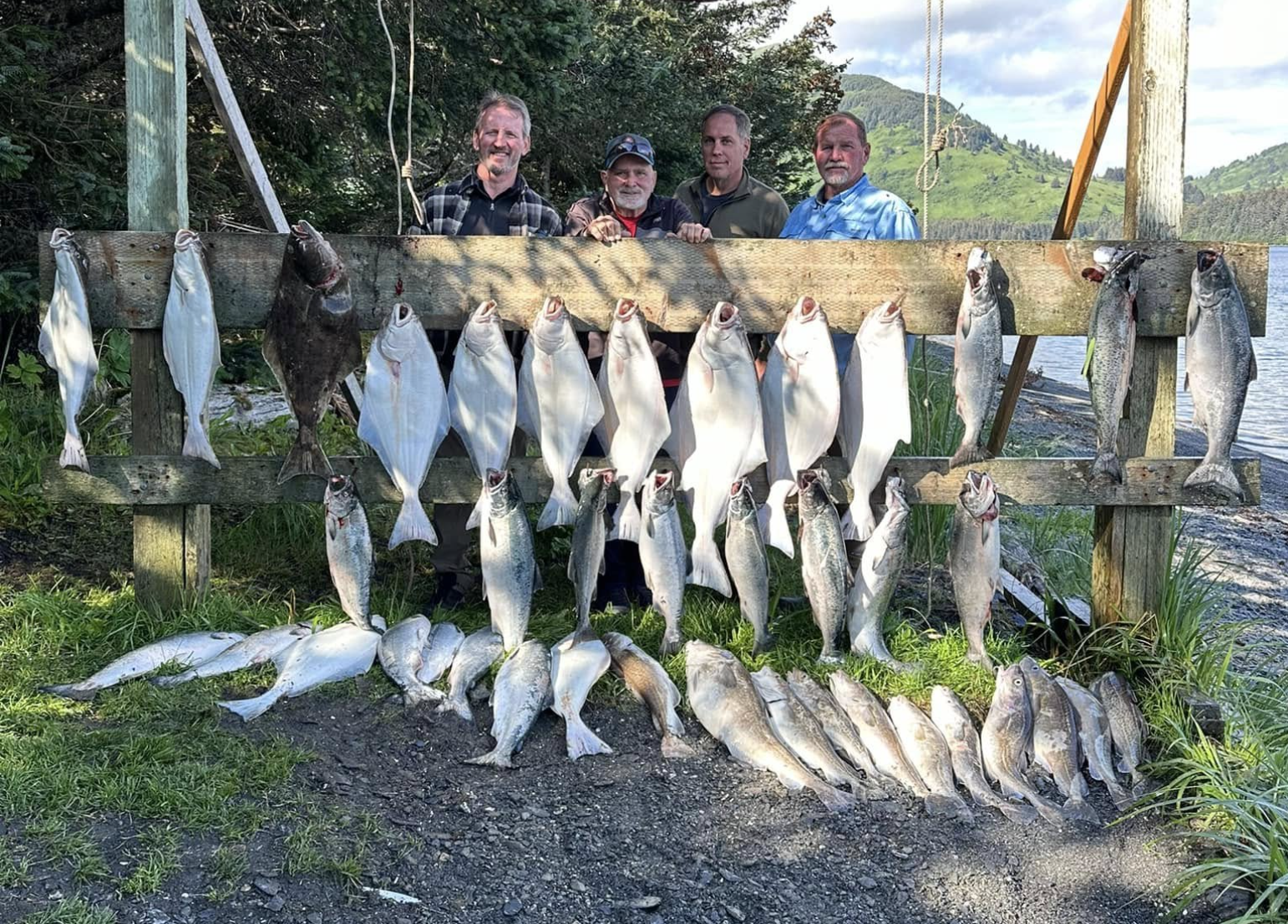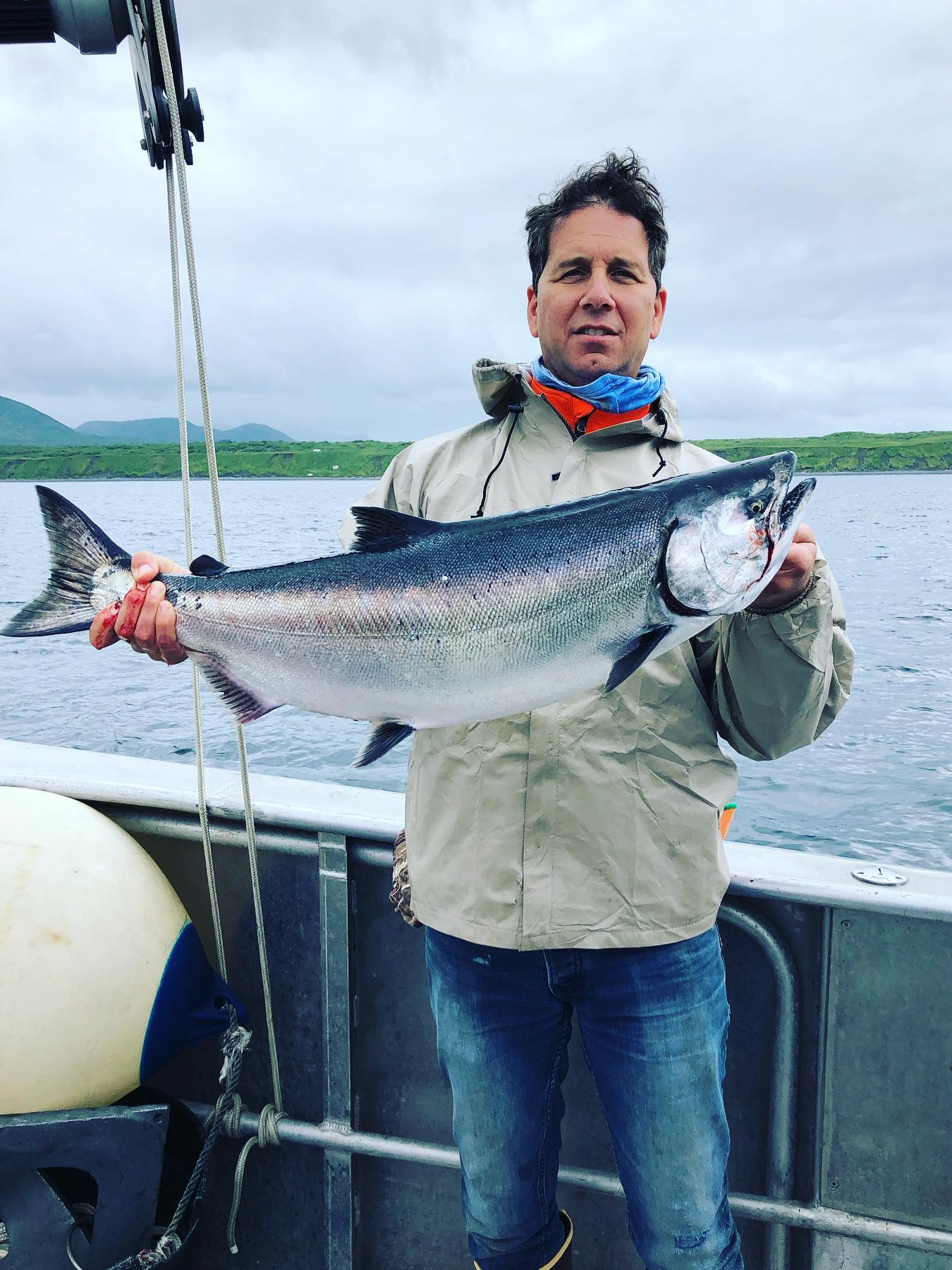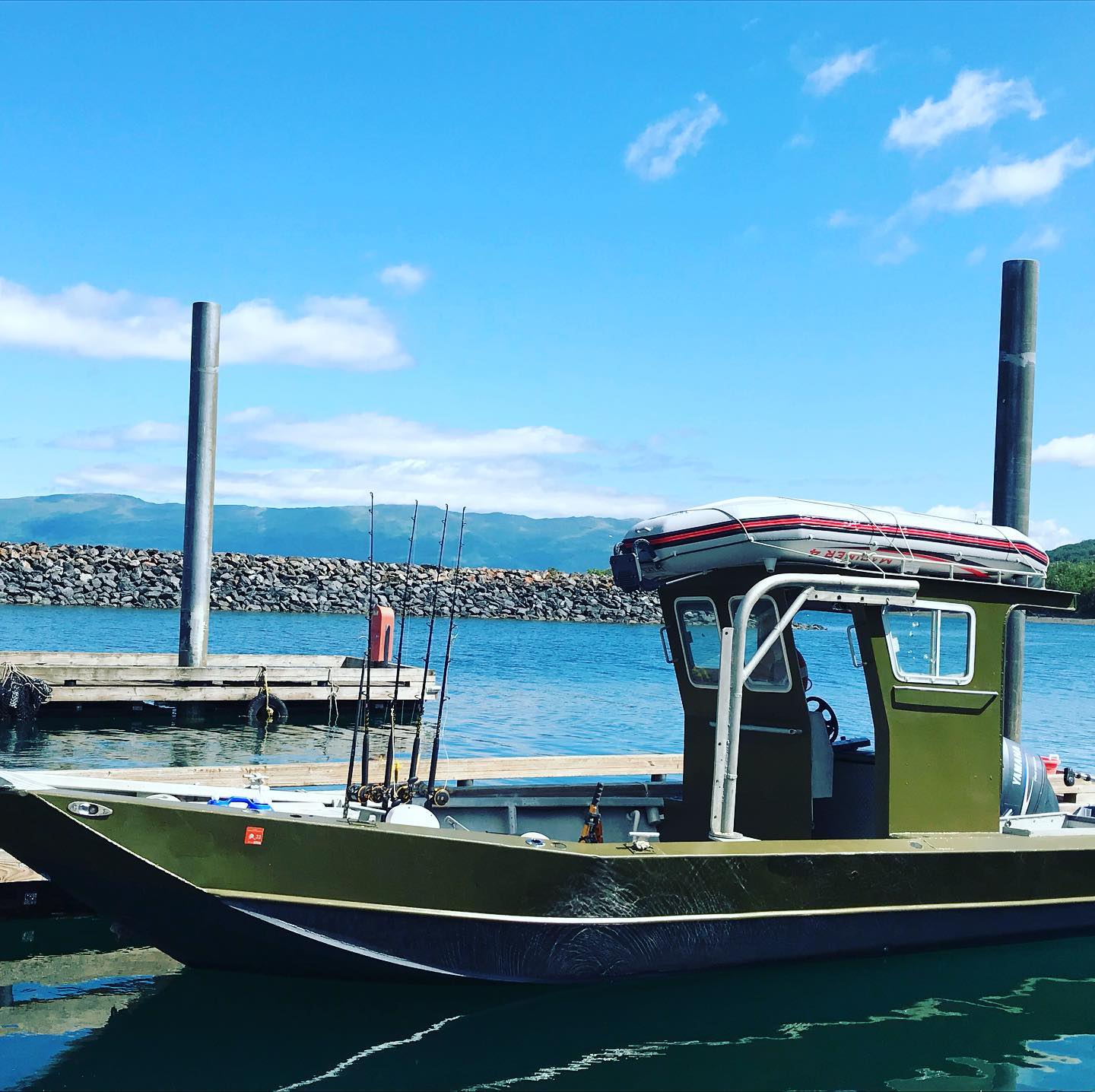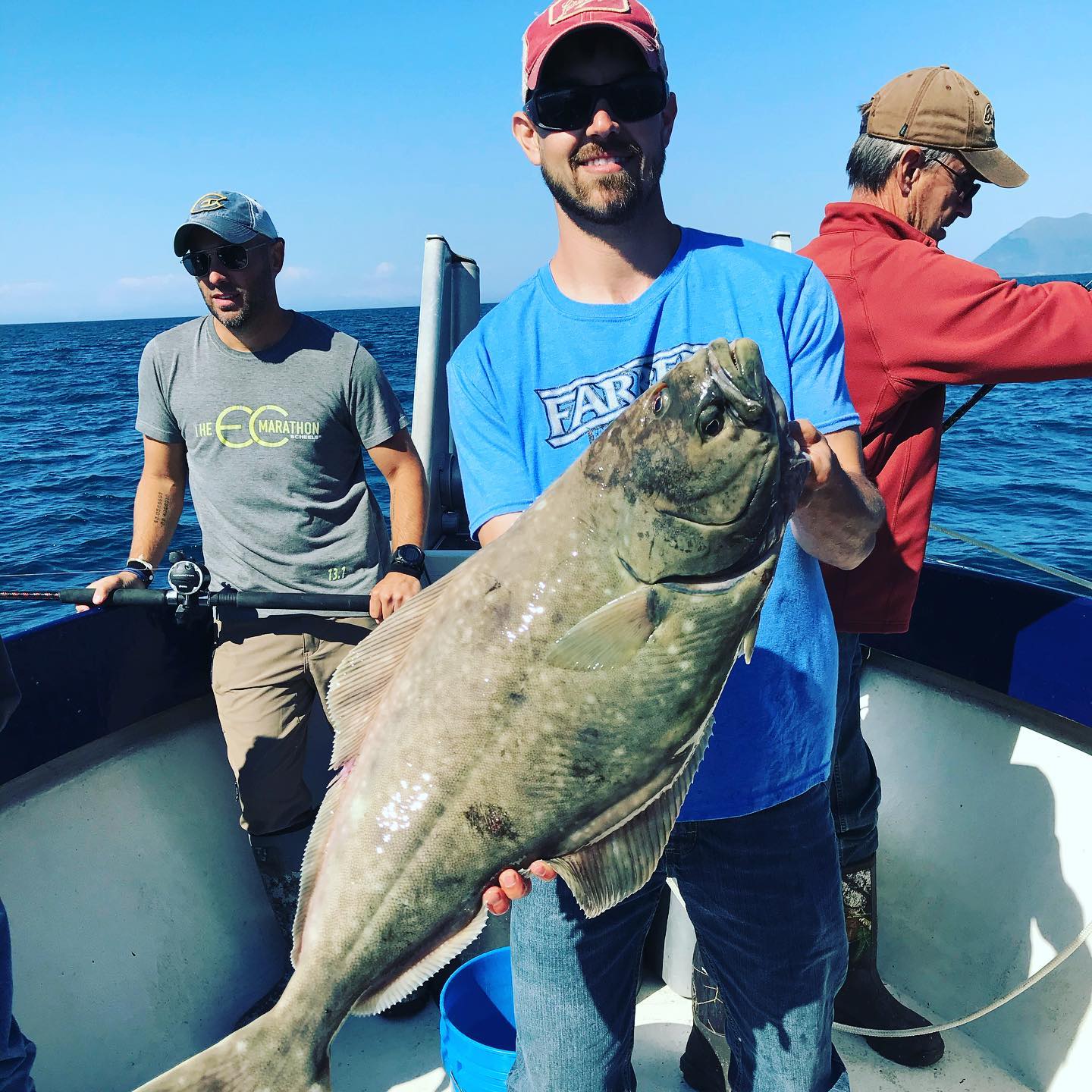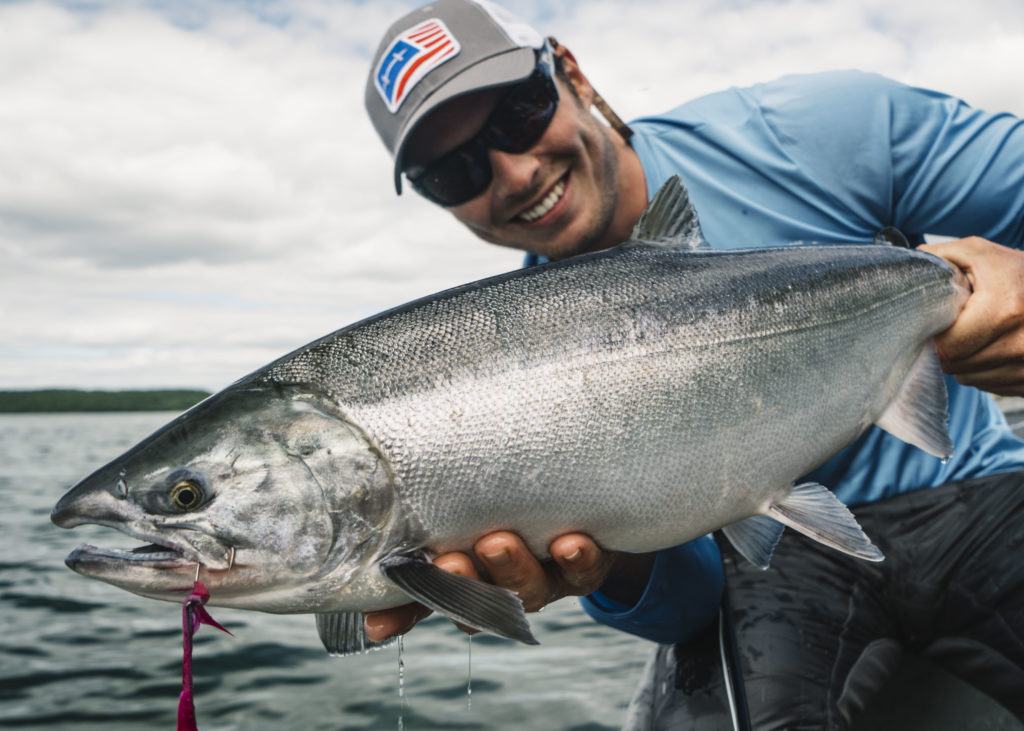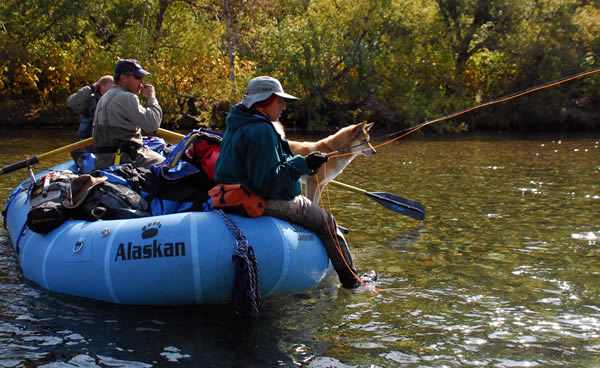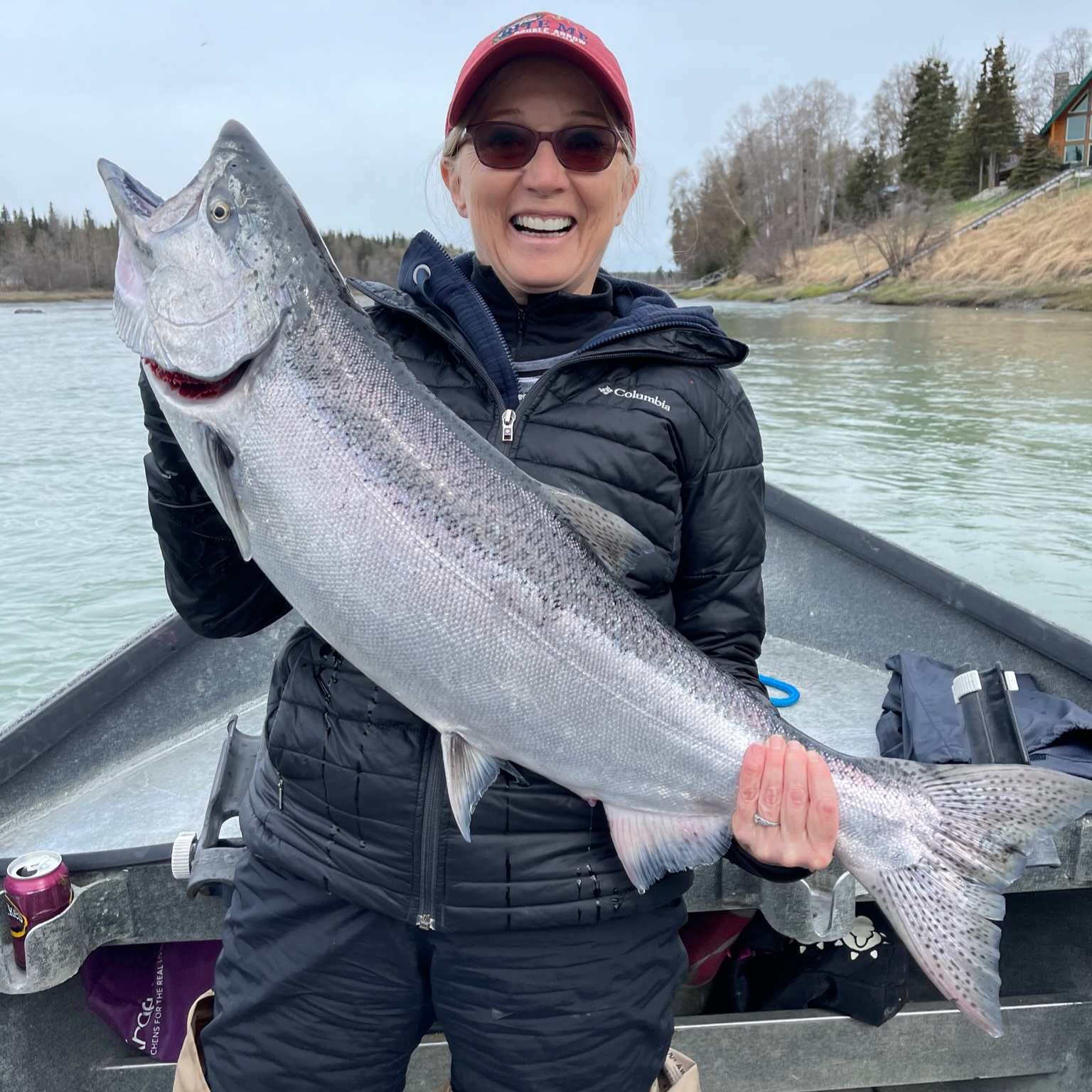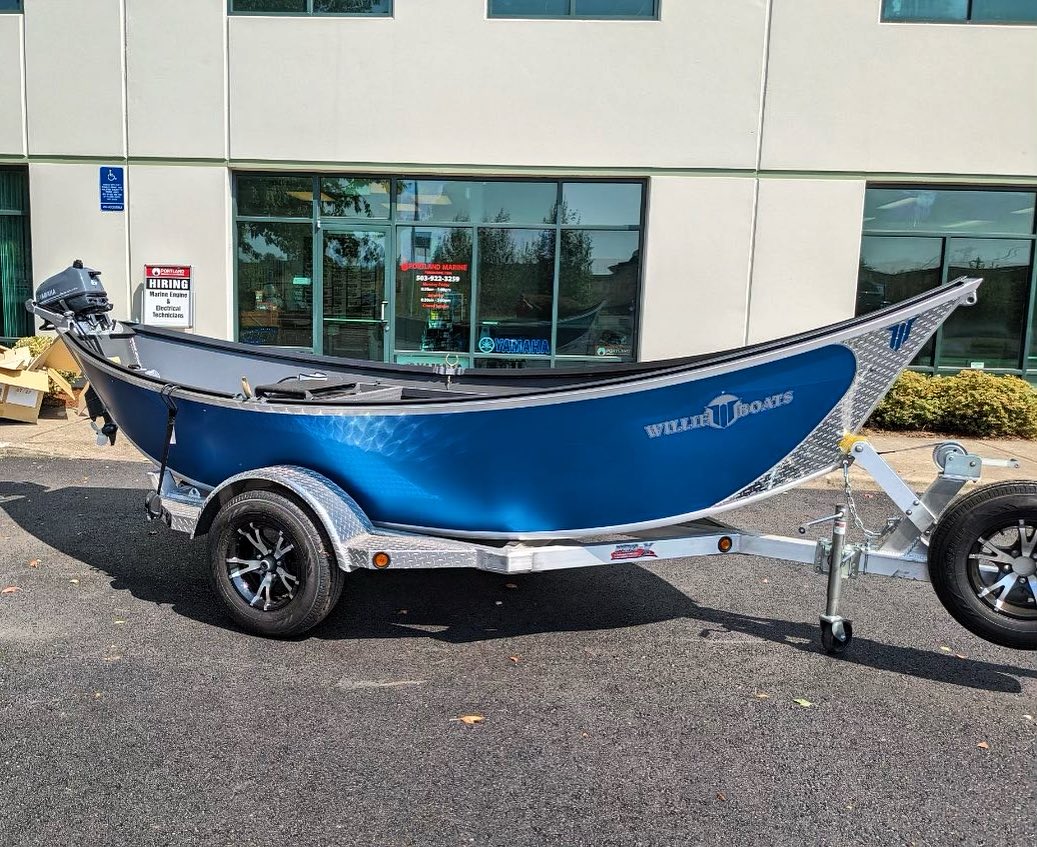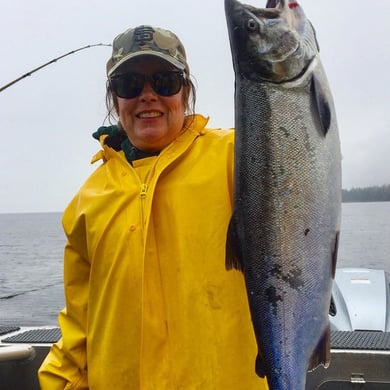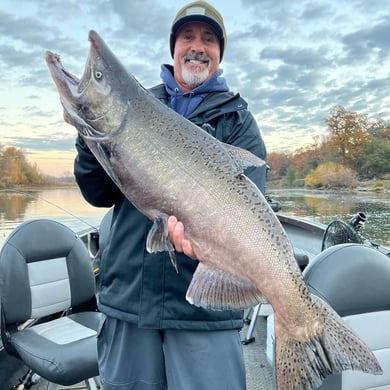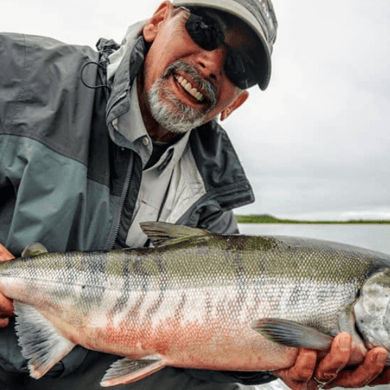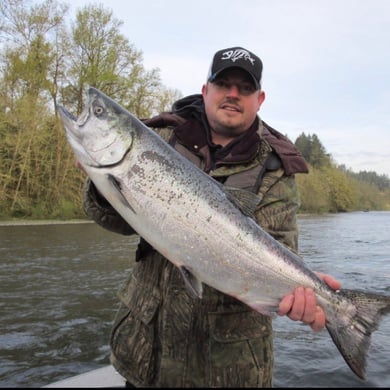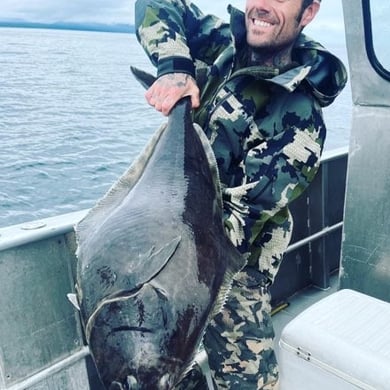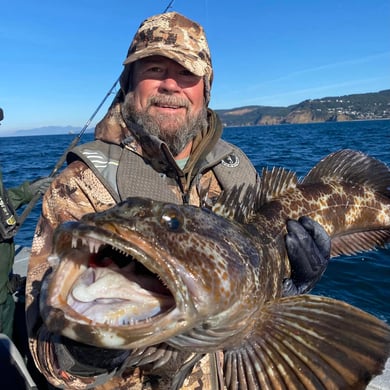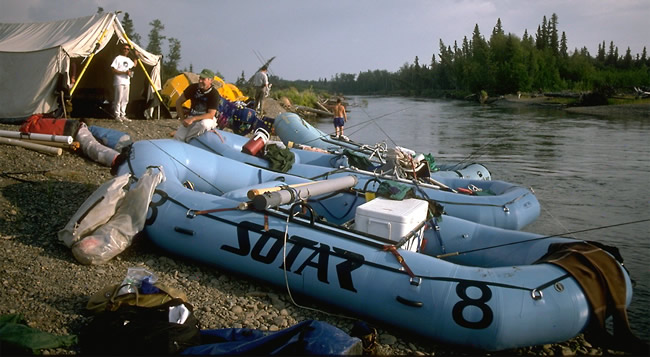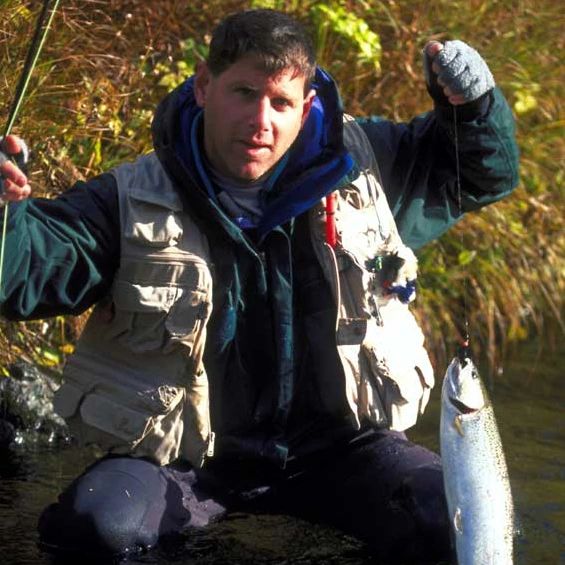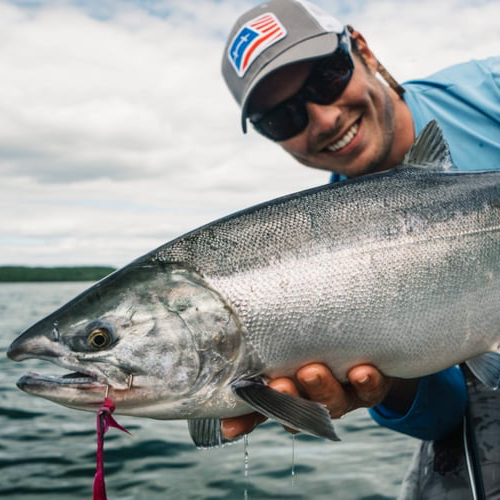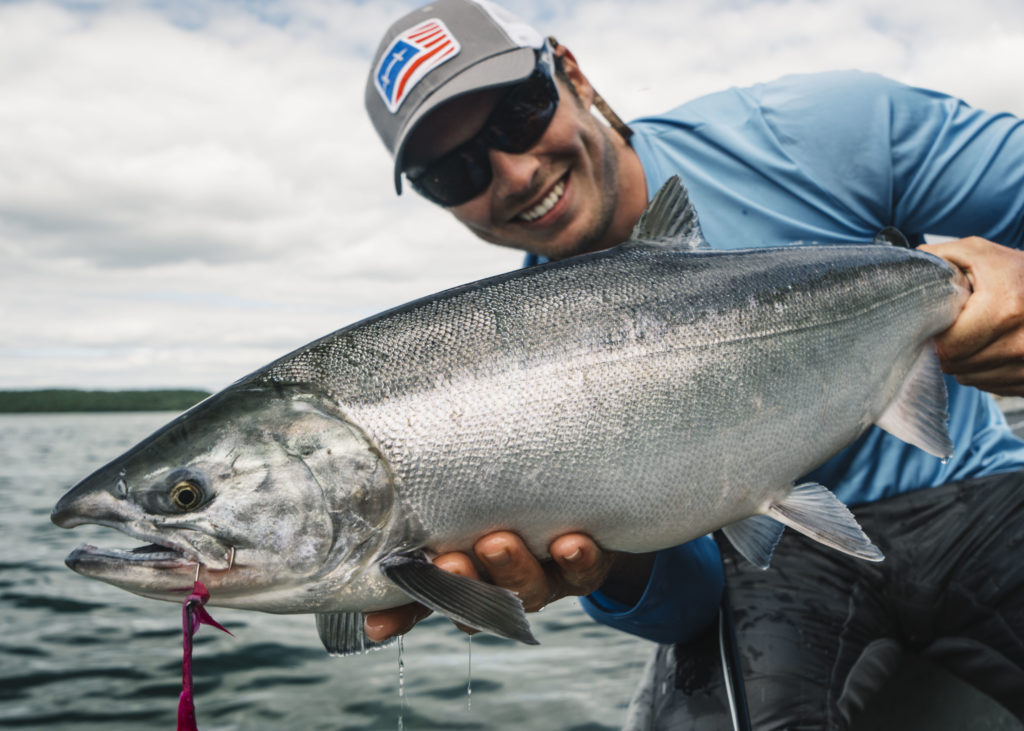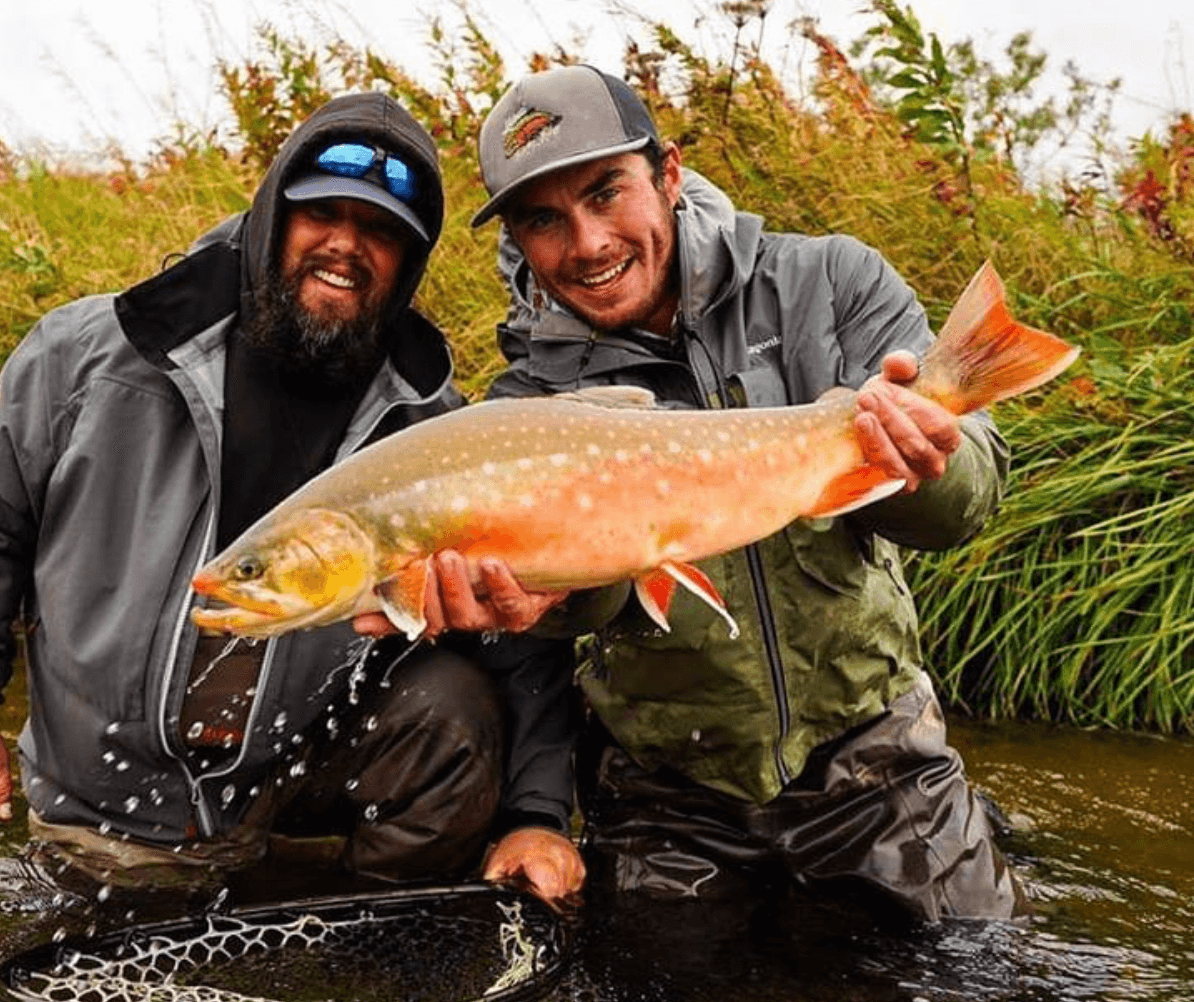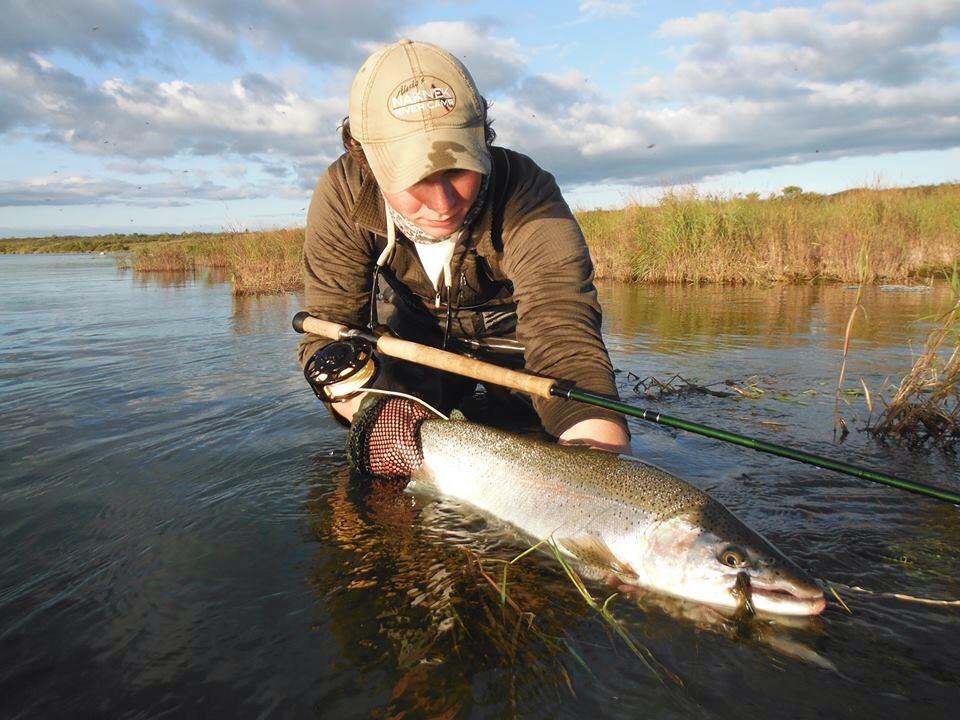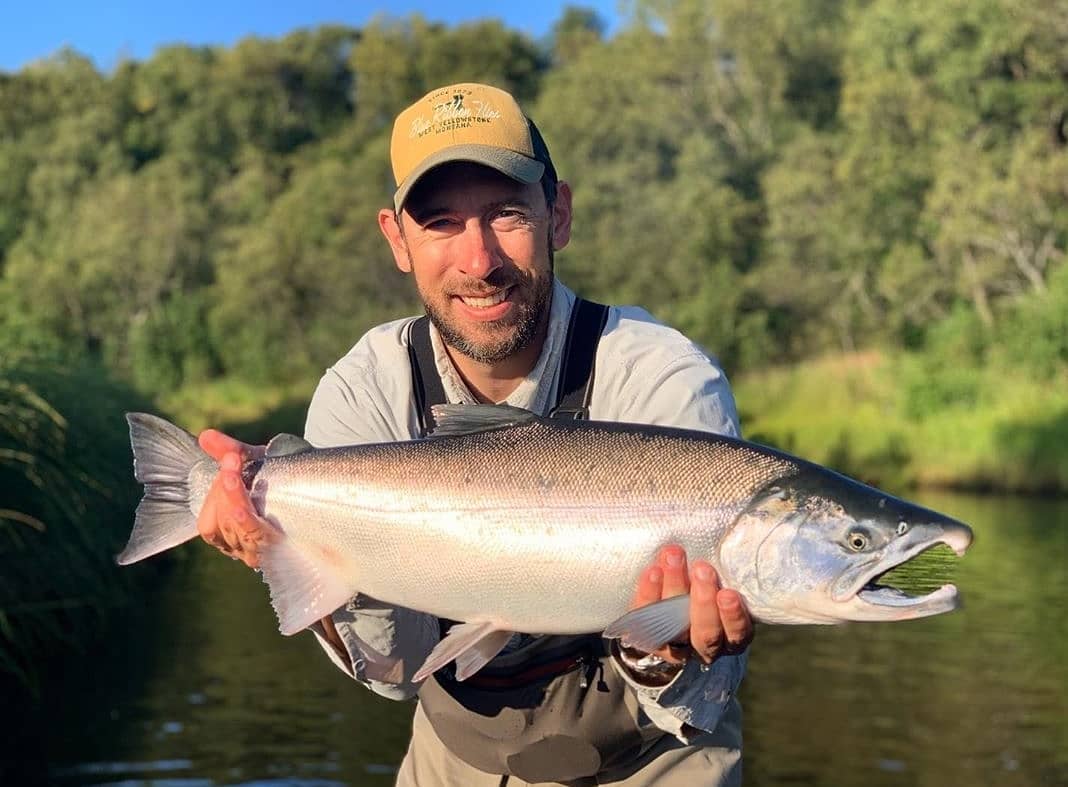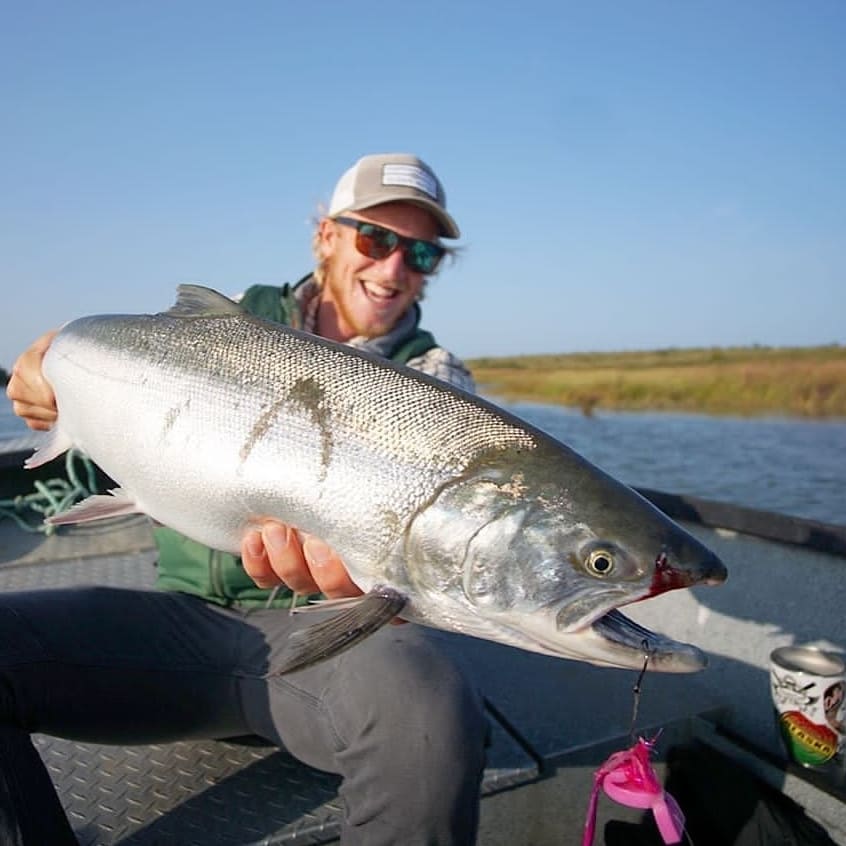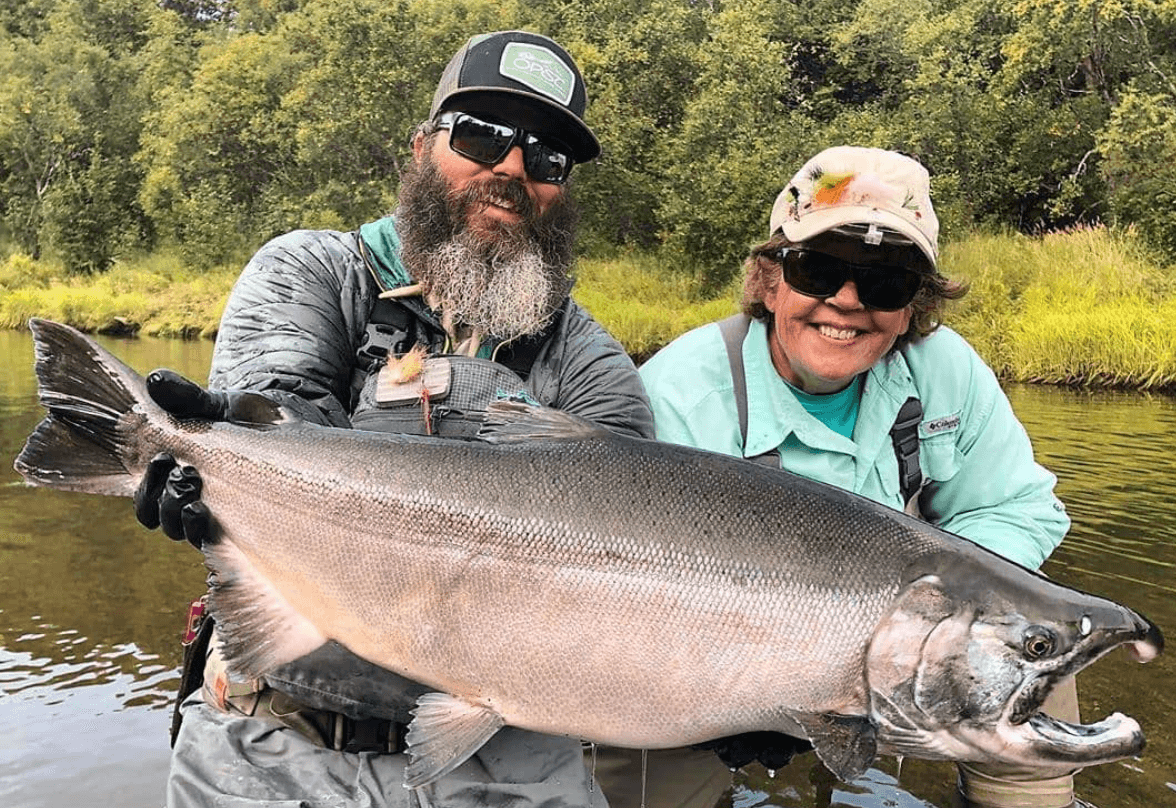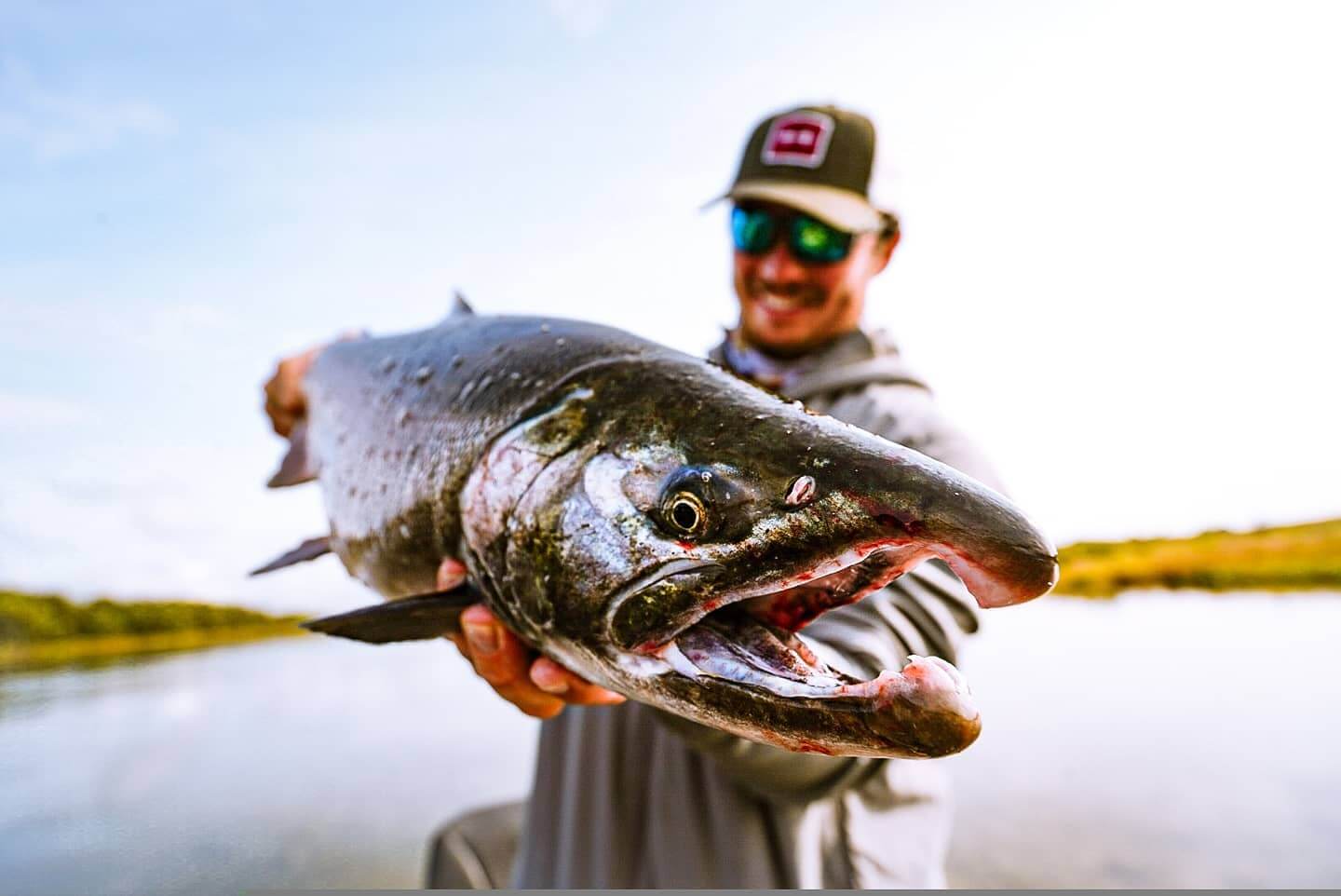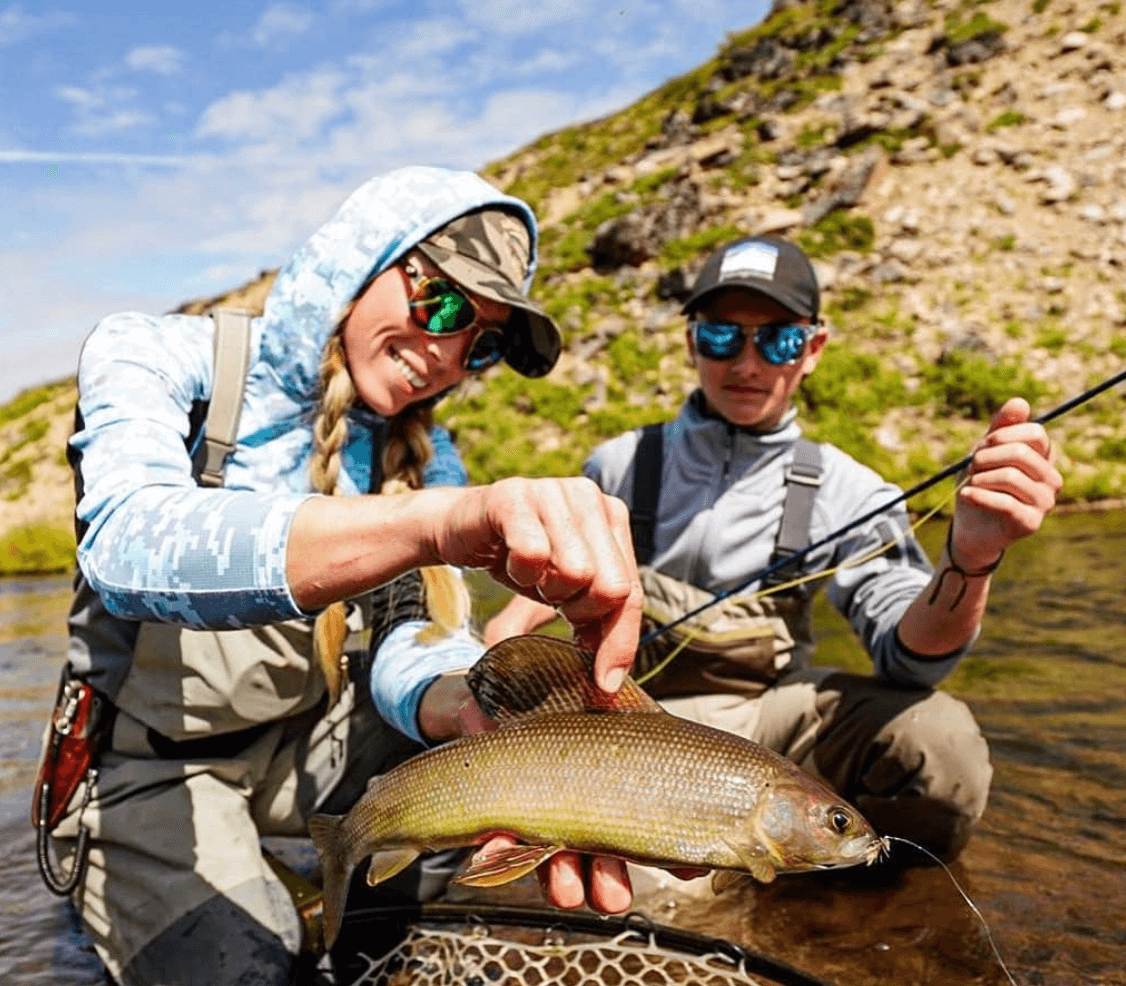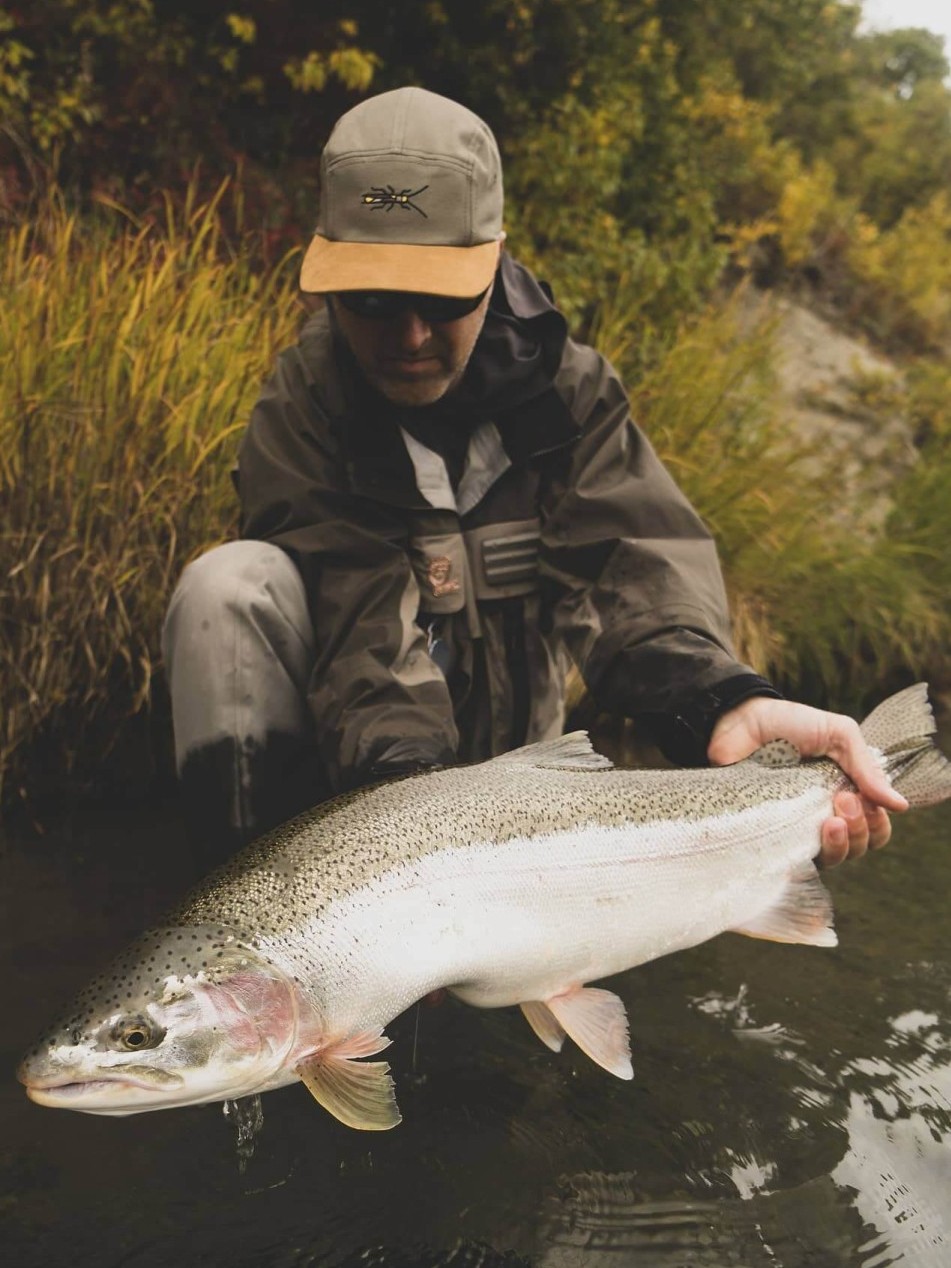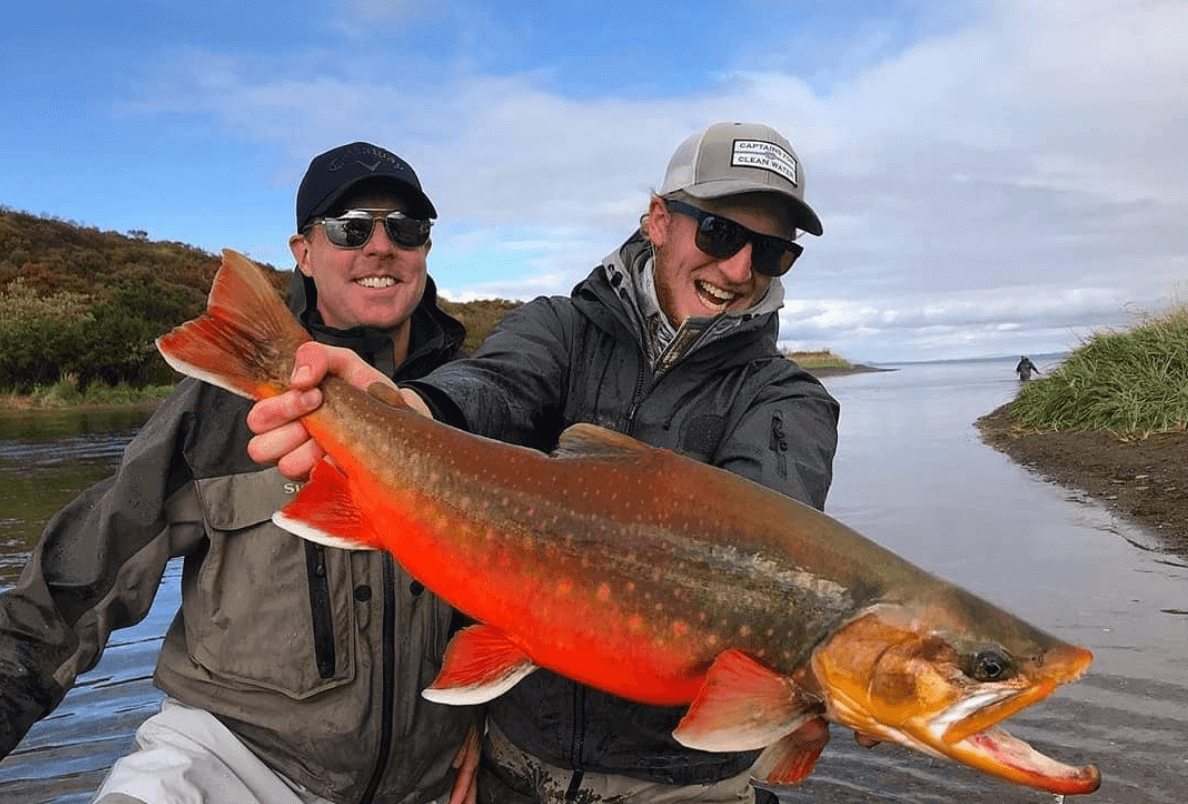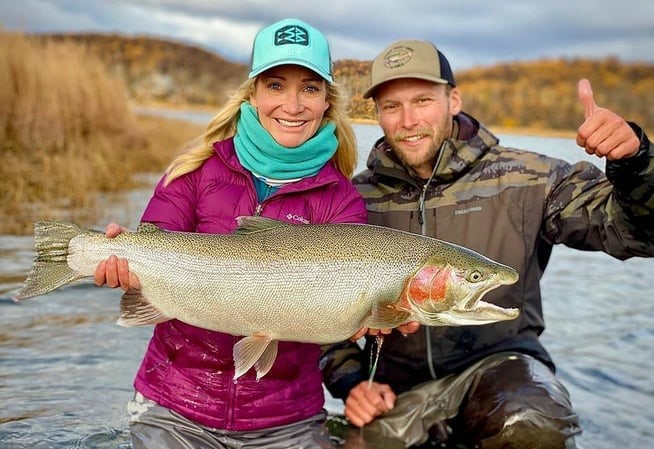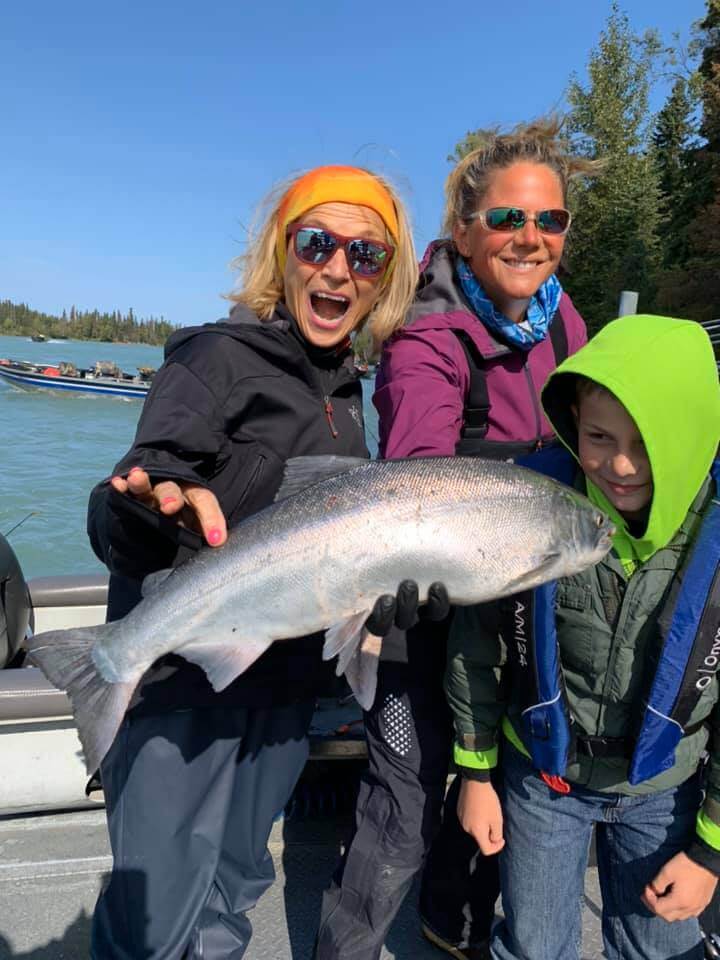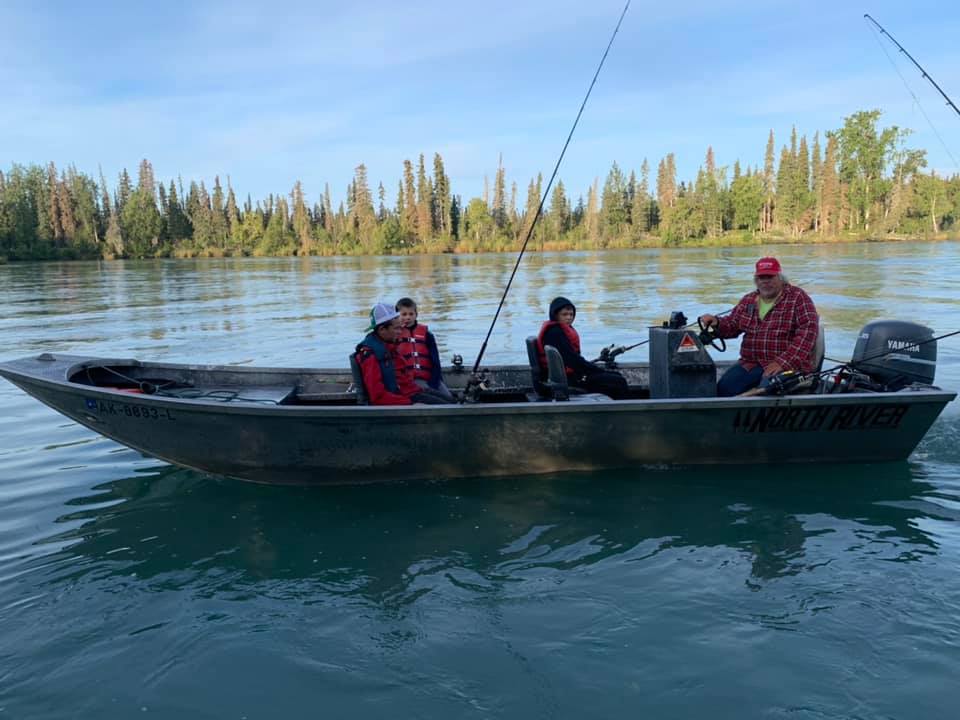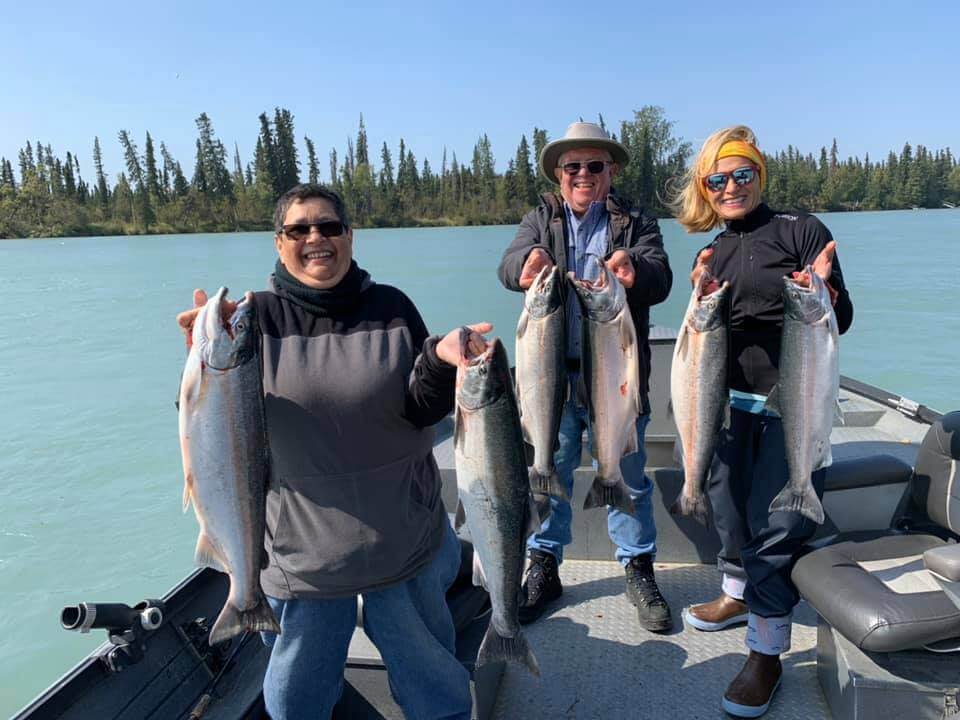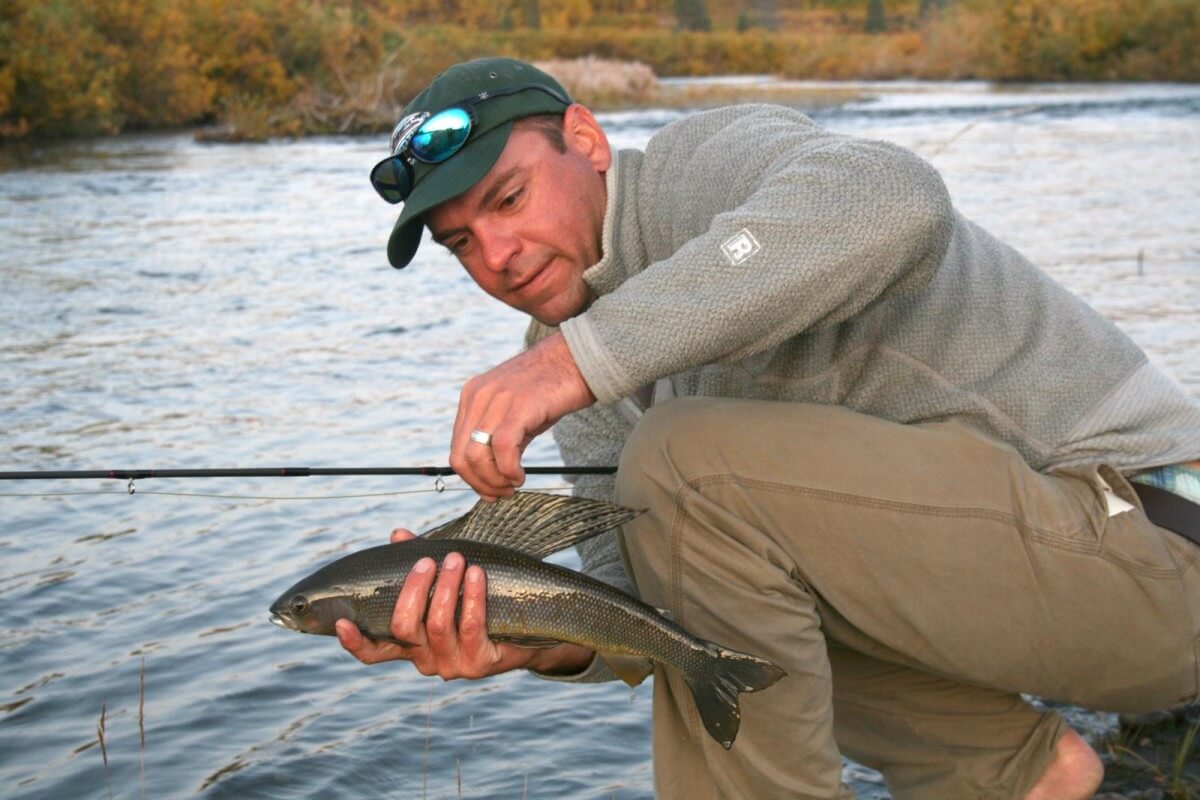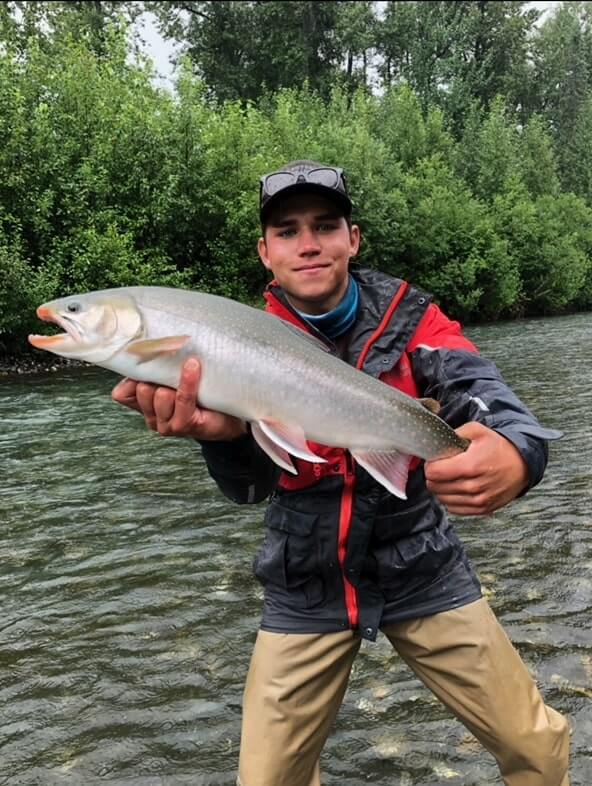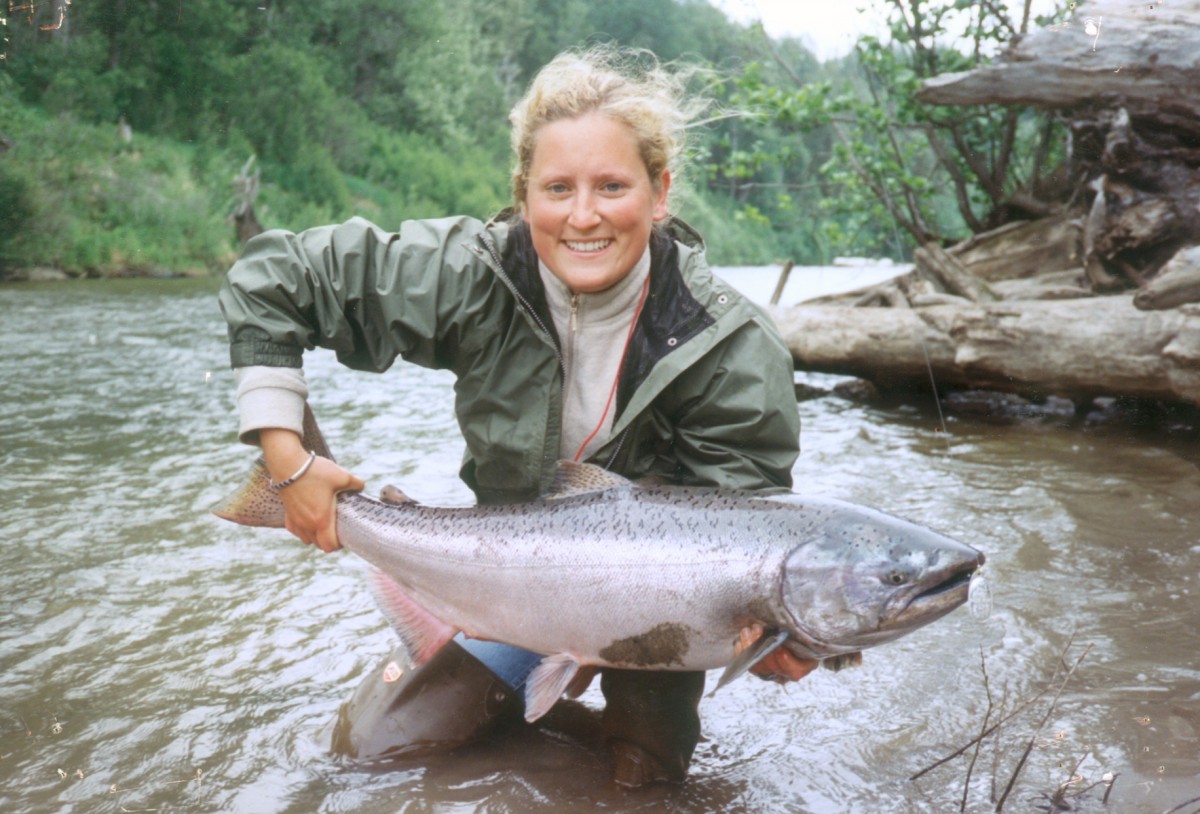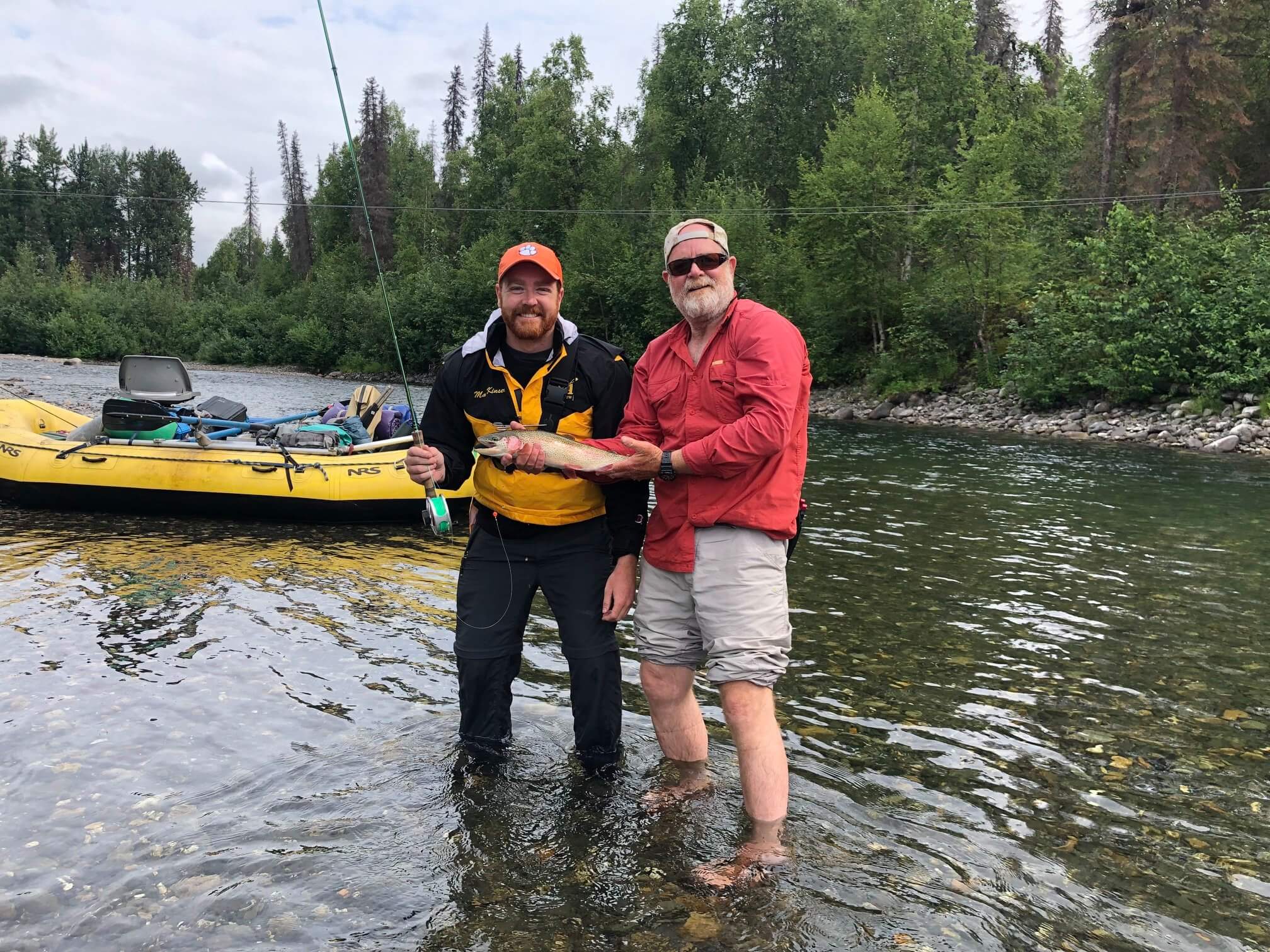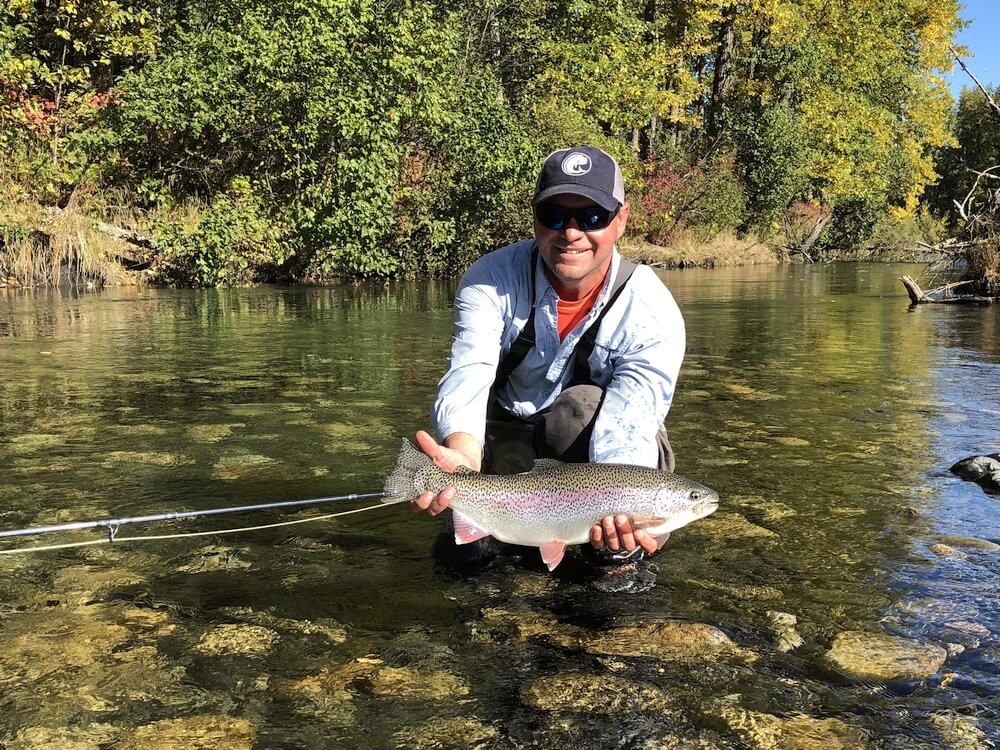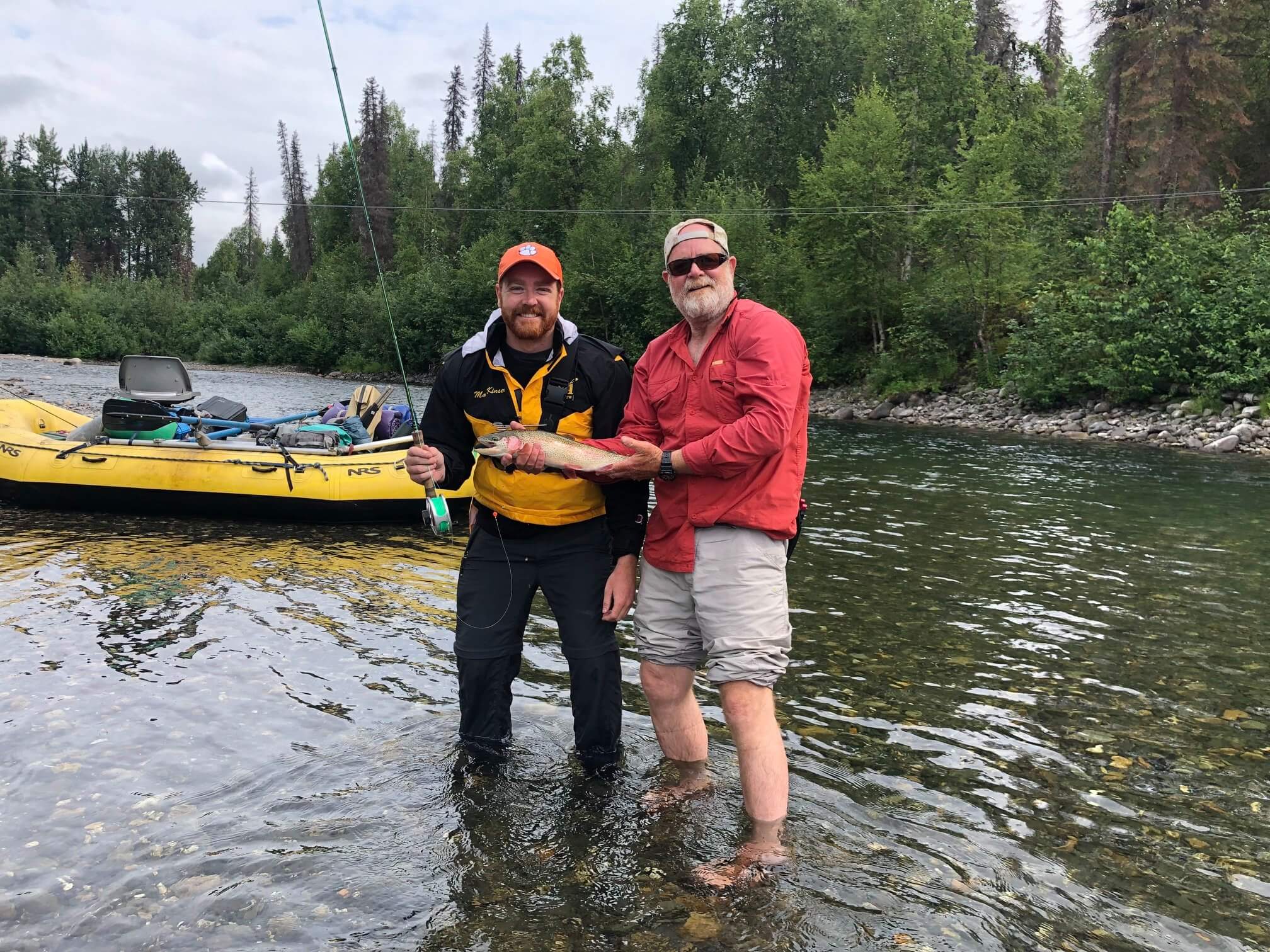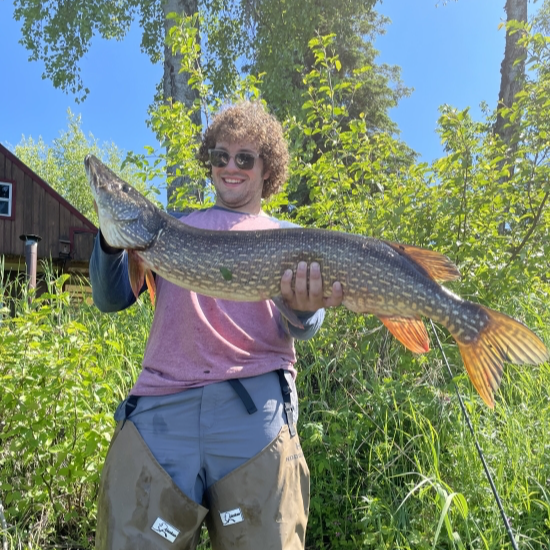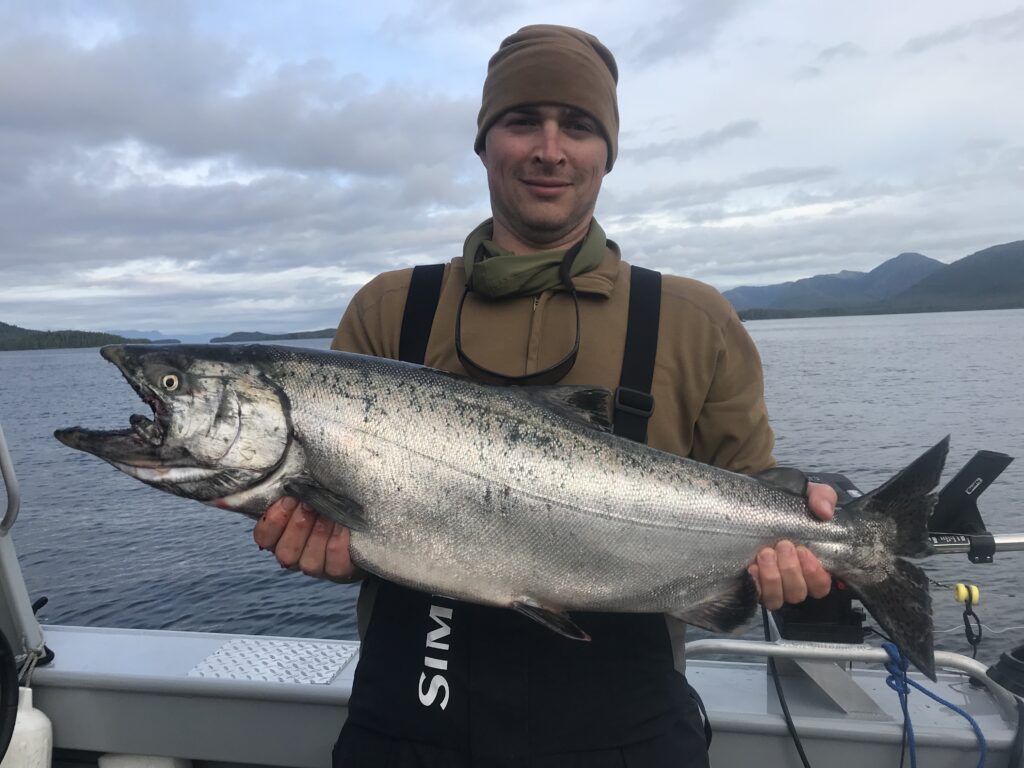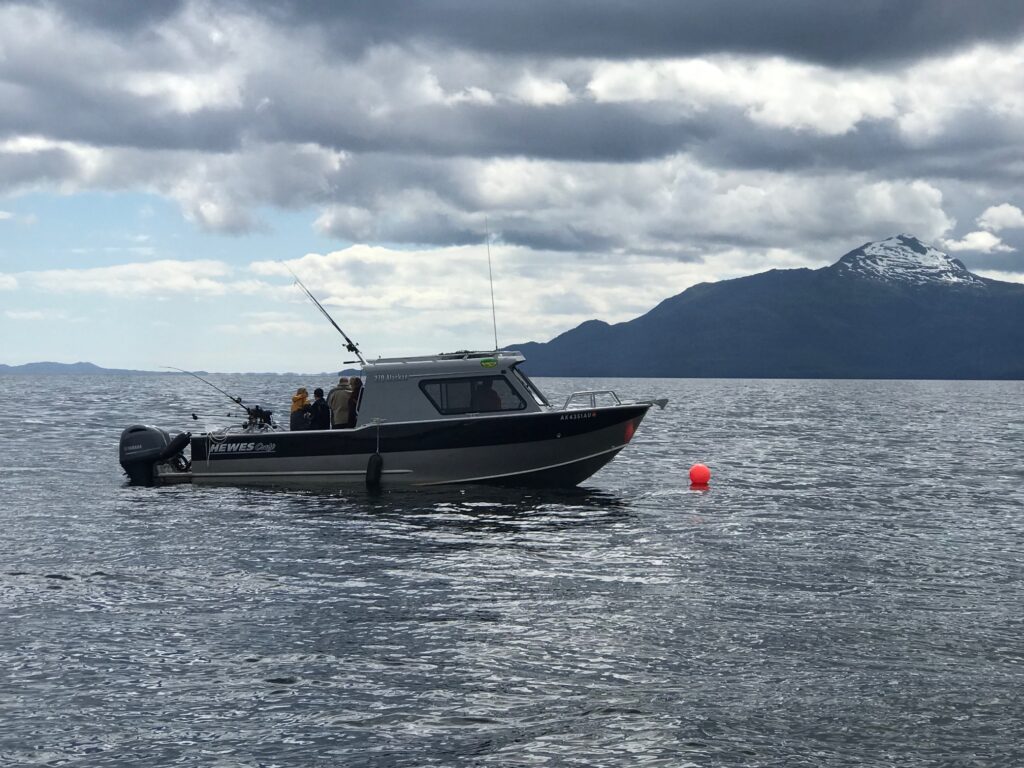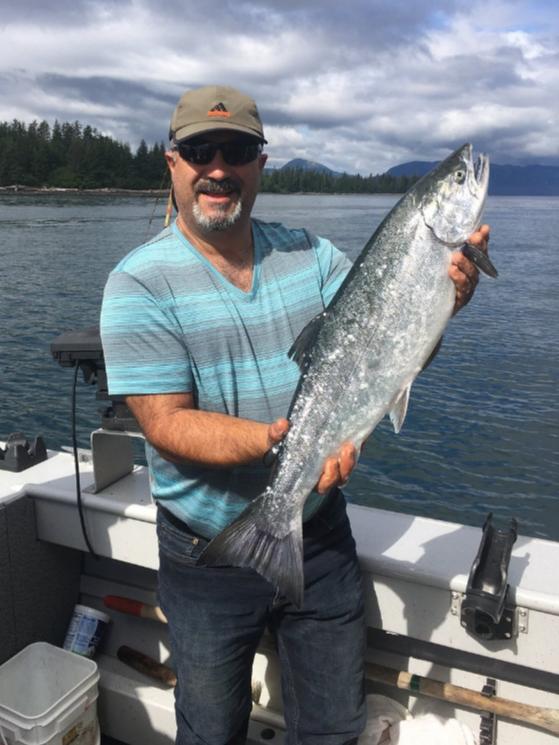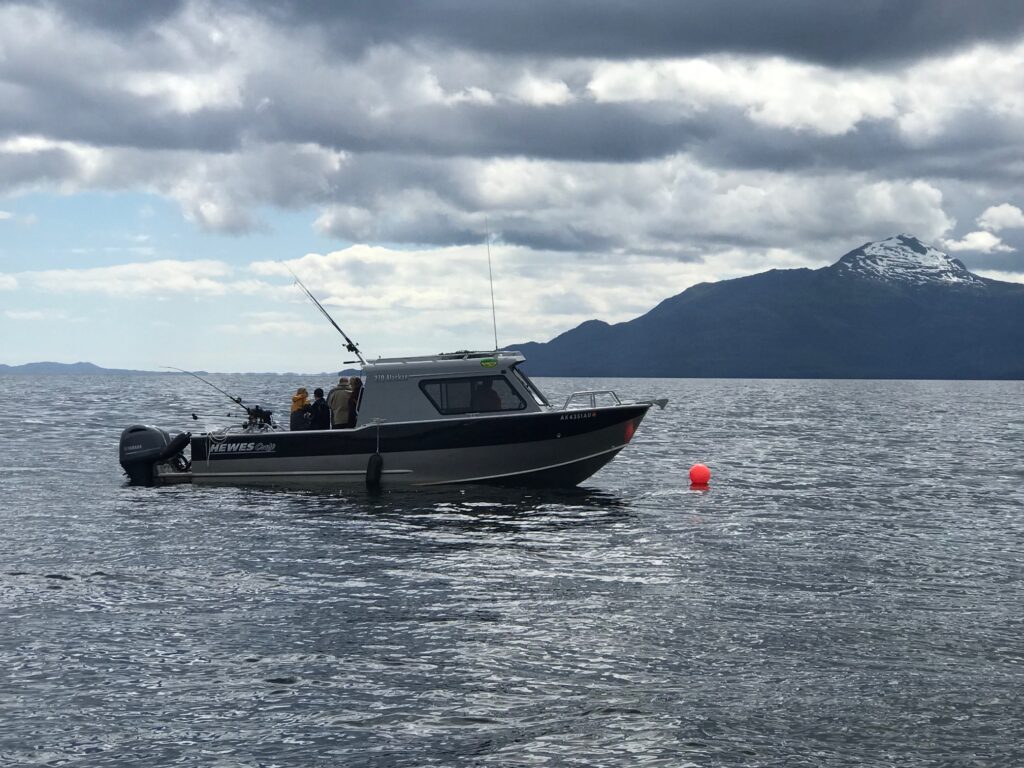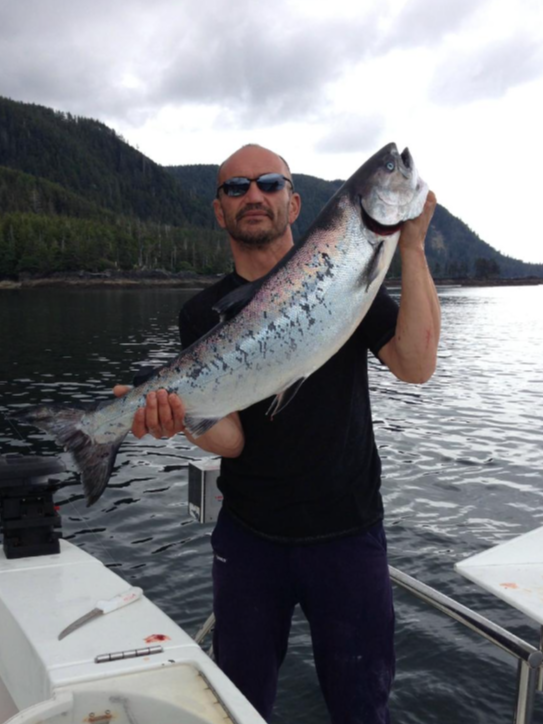Damn Good Guides
Experts Available 24/7
100% Weather Guarantee
Recently Booked Nearshore Fishing Charters In Alaska
Nearshore Fishing in Ketchikan
Ketchikan Multi-Day Fishing
Inshore, Nearshore Fishing in Kodiak
Raspberry Island Fishing Lodge
Inshore, Nearshore Fishing in Larsen Bay
6-Day Wilderness Lodge Trip
Inshore, Nearshore, Lake in King Salmon
King Salmon Standard Package
Inshore, Nearshore, River in Kenai
Kasilof River King Salmon Trip
Top Cities for Nearshore Fishing in Alaska
Top Species for Nearshore Fishing in Alaska
“Our Damn Good Guides go above and beyond, and we’ve handpicked every single one. We’re passionate about the outdoors and look forward to getting you out on the trip of a lifetime, every time.”
Jonathan and Attison | Co-founders | Austin, Texas
Other Captain Experiences Trips in Alaska
Alaska Float Fishing
Best Of Bristol Bay Package
Katmai Trophy Lodge
Naknek River Camp Do-It-Yourself
Naknek River All-Inclusive
Naknek River Camp Deluxe Package
Soldotna Day Trip
River, Lake Fishing in Talkeetna
Talkeetna Area Day Fishing Trip
River, Lake Fishing in Talkeetna
Alaskan Wilderness Flyout
River, Lake Fishing in Talkeetna
Pike In The Alaska Wilderness
Salmon Trip - 28' Hewes Craft
Salmon Trip - 32' Crozier Craft
Need a Place to Stay?
Everything to Know About Booking an Alaska nearshore fishing charter
What are the best nearshore fishing charters in Alaska?
The best nearshore fishing charters in Alaska are:
What is nearshore fishing in Alaska all about?
Nearshore fishing in Alaska offers anglers a unique and exhilarating experience amidst some of the most pristine and rugged coastal landscapes in the world. One of the primary attractions for nearshore anglers in Alaska is the abundance of Pacific salmon species, including chinook (king), coho (silver), sockeye (red), and pink salmon. These fish undertake epic migrations from the open ocean to their natal streams and rivers, passing close to the shoreline where anglers can intercept them. Techniques such as trolling with herring or anchovies, or casting with spoons and spinners, are commonly used to target salmon near river mouths, rocky points, and kelp beds during their seasonal runs.
Halibut fishing is another highlight of nearshore angling in Alaska, renowned for its world-class sportfishing opportunities. Pacific halibut are found in a range of nearshore habitats, including sandy or muddy bottoms, rock piles, and underwater structures. Anglers often use techniques such as drifting with bait rigs loaded with herring or octopus, or jigging with heavy metal jigs, to entice strikes from these large and powerful flatfish. Halibut fishing in Alaska offers anglers the chance to hook into specimens weighing over 100 pounds, making it a thrilling and rewarding pursuit for both novice and experienced anglers alike.
Alaska's nearshore waters also provide opportunities to target a variety of other species such as lingcod, rockfish, and various types of bottom-dwelling cod species. Lingcod are aggressive predators found around rocky reefs and underwater structures, where anglers use techniques such as casting with swimbaits or fishing with live bait like herring or squid. Rockfish species, including yelloweye rockfish and black rockfish, inhabit deeper waters near rocky outcroppings and underwater pinnacles, offering anglers the chance to jig with heavy tackle or fish with bait rigs to hook into these colorful and flavorful fish. Whether pursuing salmon, halibut, lingcod, or rockfish, nearshore fishing in Alaska promises unforgettable adventures in one of the world's last great wildernesses.
What are the most popular months to go nearshore fishing in Alaska?
Nearshore fishing seasons in Alaska are dictated by the annual migrations and behaviors of its diverse marine species, offering anglers distinct opportunities throughout the year in some of the most pristine coastal waters. The fishing season typically kicks off in late spring and early summer, as warmer temperatures bring a flurry of activity along Alaska's shoreline. This time of year marks the arrival of various Pacific salmon species, including chinook (king), coho (silver), and sockeye (red) salmon, returning from the ocean to their freshwater spawning grounds. Anglers target these salmon using techniques such as trolling with herring or artificial lures, or casting with spinners and spoons near river mouths and rocky points where the fish congregate before entering freshwater.
Midsummer in Alaska's nearshore waters sees peak fishing activity for Pacific halibut, another prized species for anglers. Halibut fishing is particularly productive around sandy or muddy bottoms, rock piles, and underwater structures where these large flatfish feed. Anglers use techniques such as drifting with bait rigs loaded with herring or octopus, or jigging with heavy metal jigs, to entice strikes from these powerful fish. Halibut fishing remains robust through late summer into early fall, providing ample opportunities for anglers to target these prized fish before they migrate to deeper waters for the winter.
Fall in Alaska brings cooler temperatures and another wave of fishing opportunities along its coastline. This season is characterized by the continuation of salmon runs, particularly coho salmon, which remain active in nearshore waters as they prepare to spawn. Anglers adjust their tactics to match changing water conditions and fish behaviors, focusing on areas such as kelp beds, rocky points, and river mouths where salmon congregate before their final journey upstream. Lingcod and various rockfish species also become more active during the fall months, offering anglers additional targets using techniques such as jigging with heavy tackle or fishing with bait rigs near underwater structures. Overall, nearshore fishing seasons in Alaska provide anglers with a wealth of opportunities to pursue a wide range of species amidst the state's rugged and breathtaking coastal landscapes.
What techniques are popular for nearshore fishing in Alaska?
Nearshore fishing in Alaska offers anglers a variety of techniques and approaches tailored to the state's diverse marine habitats and abundant fish species. One of the primary techniques used by anglers is trolling, which involves trailing bait or lures behind a moving boat to cover large areas of water effectively. Anglers targeting salmon species such as chinook (king), coho (silver), and sockeye (red) often use trolling with herring, plugs, or spoons near river mouths, rocky points, and kelp beds during their seasonal migrations. Adjusting trolling speeds and depths based on water conditions and fish behavior is crucial for enticing strikes from these migratory fish.
Drift fishing is another popular technique among nearshore anglers in Alaska, particularly effective for targeting species like Pacific halibut and lingcod. Anglers drift with the current or wind using live bait such as herring, octopus, or squid rigged on heavy-duty tackle or bait rigs. This method allows anglers to cover expansive areas of sandy or rocky bottoms where halibut and lingcod feed. Rigging with scent attractants or using artificial lures such as large swimbaits or heavy jigs can also be effective for enticing strikes from these bottom-dwelling predators.
For anglers seeking a more hands-on approach, casting with spinning or baitcasting rods equipped with artificial lures is a versatile method for nearshore fishing in Alaska. Anglers target species such as lingcod, rockfish, and various cod species using a variety of lures such as swimbaits, jigs, spoons, or soft plastics. Casting around rocky reefs, underwater structures, and kelp forests allows anglers to target these fish in shallower waters where they hunt for prey. Adjusting casting distances, retrieval speeds, and lure presentations based on water conditions and fish activity can significantly improve success rates for anglers pursuing their favorite nearshore species in Alaska's rugged coastal environments.
What species are popular for nearshore fishing in Alaska?
When nearshore fishing in Alaska, anglers have the opportunity to target a diverse range of iconic and sought-after species, each offering unique challenges and rewards amidst the state's breathtaking coastal scenery. One of the most prized targets for anglers is Pacific salmon, including species like chinook (king), coho (silver), and sockeye (red) salmon. These salmon species undertake epic migrations from the open ocean to their spawning grounds in Alaska's rivers and streams, passing nearshore waters along the way. Anglers often target salmon using techniques such as trolling with herring or artificial lures, or casting with spinners and spoons near river mouths, rocky points, and kelp beds during their seasonal runs.
Pacific halibut is another coveted species for nearshore anglers in Alaska, known for its delicious white meat and formidable size. Halibut are commonly found along sandy or muddy bottoms, rocky reefs, and underwater structures where they feed on smaller fish and crustaceans. Anglers use techniques such as drifting with bait rigs loaded with herring or octopus, or jigging with heavy metal jigs to entice strikes from these powerful flatfish. Halibut fishing in Alaska provides anglers with the opportunity to hook into specimens weighing over 100 pounds, making it a thrilling and rewarding pursuit for both recreational and sport anglers alike.
Alaska's nearshore waters also host a variety of other species such as lingcod, rockfish, and various cod species. Lingcod are aggressive predators found around rocky reefs and underwater structures, where anglers target them using techniques such as casting with swimbaits, jigs, or live bait like herring or squid. Rockfish species, including yelloweye rockfish and black rockfish, inhabit deeper waters near rocky outcroppings and underwater pinnacles, offering anglers the chance to jig with heavy tackle or fish with bait rigs to hook into these colorful and flavorful fish. Whether pursuing salmon, halibut, lingcod, or rockfish, nearshore fishing in Alaska promises unforgettable adventures and impressive catches against the backdrop of the state's rugged and majestic coastal landscapes.
The Best Places to Fish in Alaska
Featured Cities
- Fishing Charters Near Me
- Austin Fishing Guides
- Biloxi Fishing Charters
- Bradenton Fishing Charters
- Cabo San Lucas Fishing Charters
- Cancun Fishing Charters
- Cape Coral Fishing Charters
- Charleston Fishing Charters
- Clearwater Fishing Charters
- Corpus Christi Fishing Charters
- Crystal River Fishing Charters
- Dauphin Island Fishing Charters
- Daytona Beach Fishing Charters
- Destin Fishing Charters
- Fort Lauderdale Fishing Charters
- Fort Myers Fishing Charters
- Fort Walton Beach Fishing Charters
- Galveston Fishing Charters
- Gulf Shores Fishing Charters
- Hatteras Fishing Charters
- Hilton Head Fishing Charters
- Islamorada Fishing Charters
- Jacksonville Fishing Charters
- Jupiter Fishing Charters
- Key Largo Fishing Charters
- Key West Fishing Charters
- Kona Fishing Charters
- Lakeside Marblehead Fishing Charters
- Marathon Fishing Charters
- Marco Island Fishing Charters
- Miami Fishing Charters
- Montauk Fishing Charters
- Morehead City Fishing Charters
- Naples Fishing Charters
- New Orleans Fishing Charters
- New Smyrna Beach Fishing Charters
- Ocean City Fishing Charters
- Orange Beach Fishing Charters
- Panama City Beach Fishing Charters
- Pensacola Fishing Charters
- Pompano Beach Fishing Charters
- Port Aransas Fishing Charters
- Port Orange Fishing Charters
- Rockport Fishing Charters
- San Diego Fishing Charters
- San Juan Fishing Charters
- Sarasota Fishing Charters
- South Padre Island Fishing Charters
- St. Augustine Fishing Charters
- St. Petersburg Fishing Charters
- Tampa Fishing Charters
- Tarpon Springs Fishing Charters
- Venice Fishing Charters
- Virginia Beach Fishing Charters
- West Palm Beach Fishing Charters
- Wilmington Fishing Charters
- Wrightsville Beach Fishing Charters
How are fishing conditions in Alaska?
View Alaska Fishing Reports from our damn good guides.
Didn't Find What You Were Looking For?
Our guides are Damn Good Guides, which means they’re vetted by our team of outdoor experts who know them on a first-name basis. We hand pick each and every one of them, and our network spans all across the US and beyond.
The proof is in the pudding, and we’re incredibly proud of our 4.9 / 5 average review score. Hit the button below to see more trip options:
